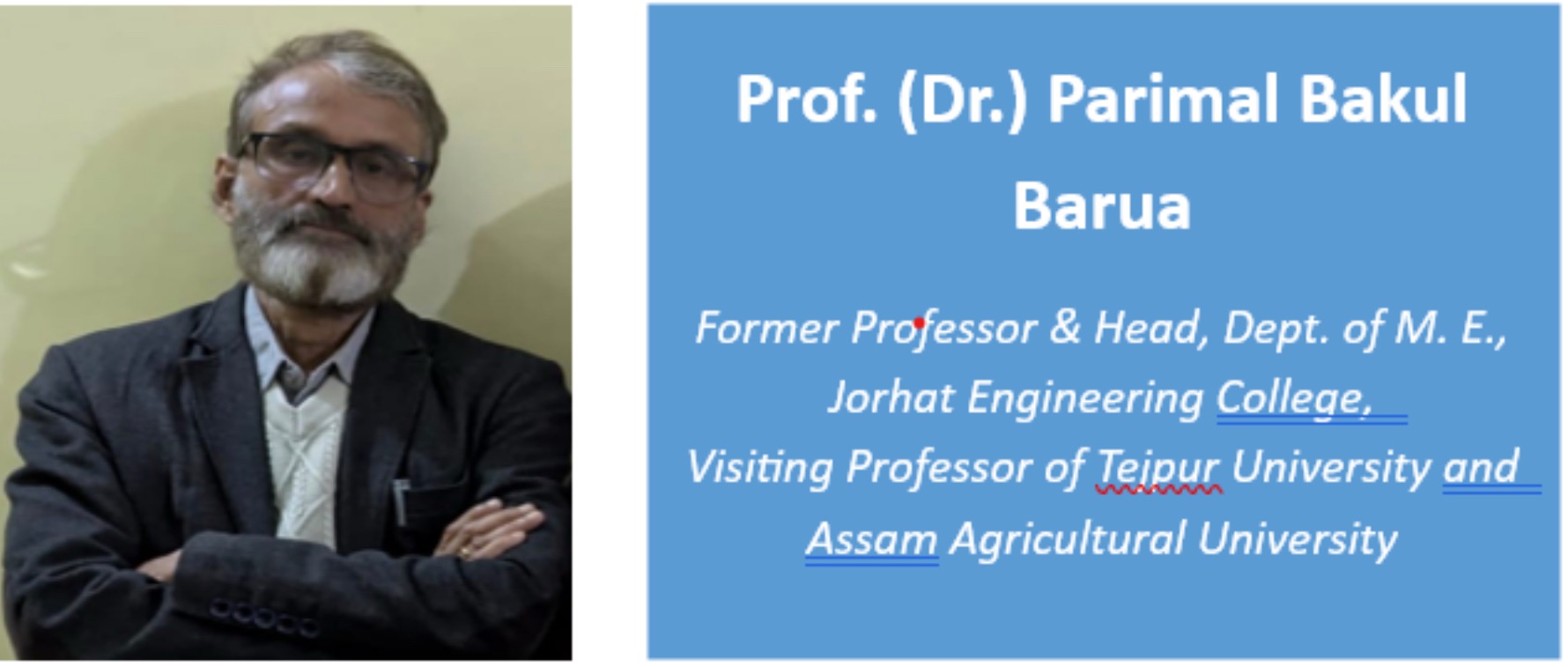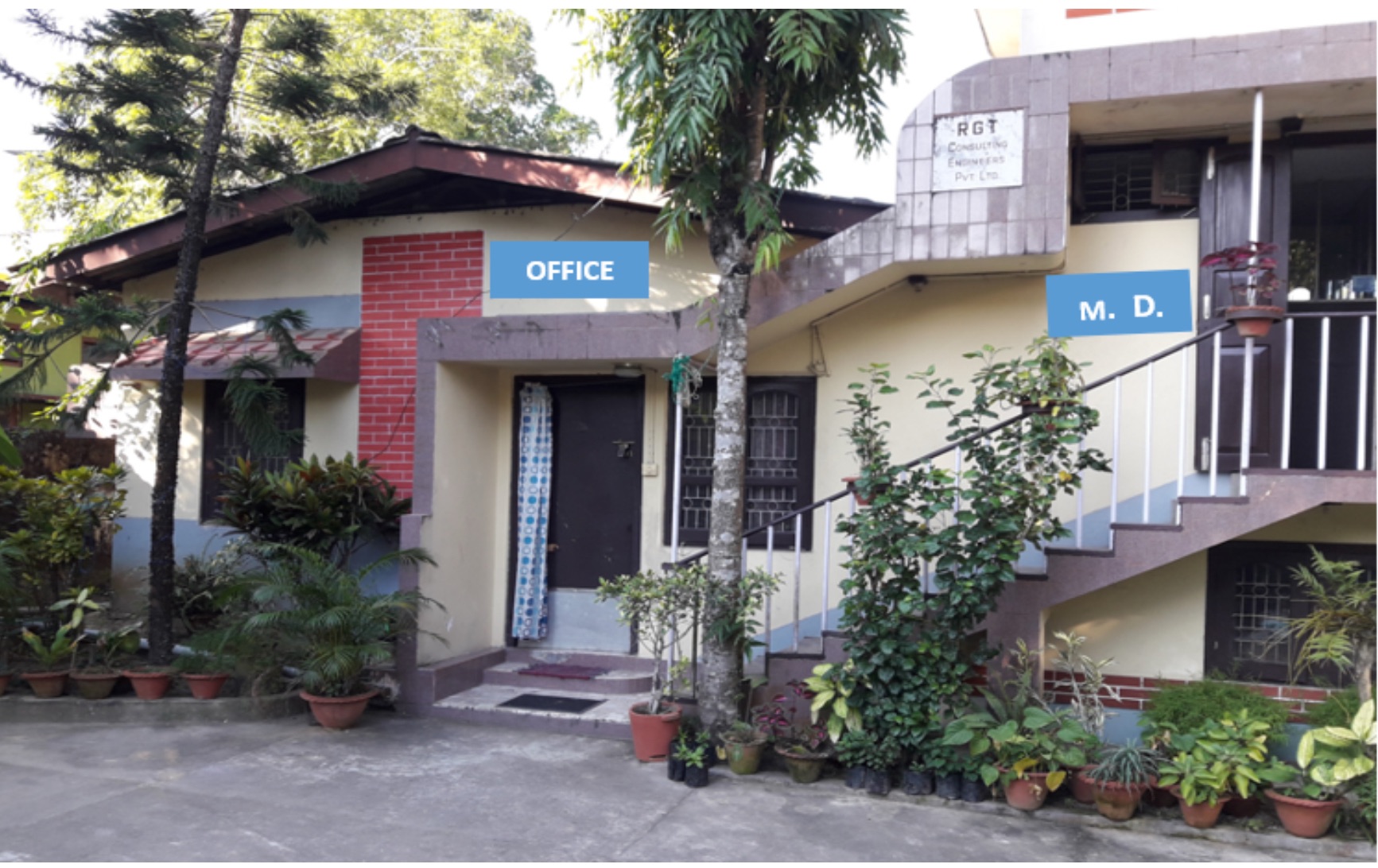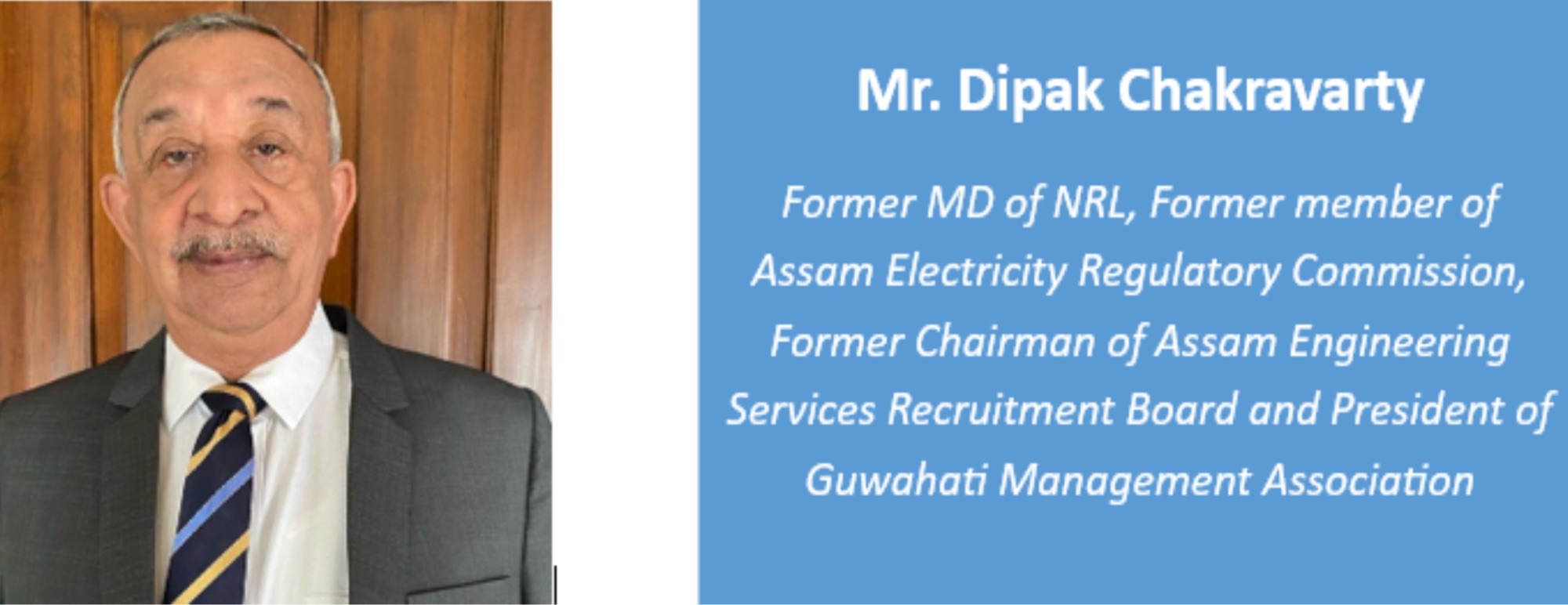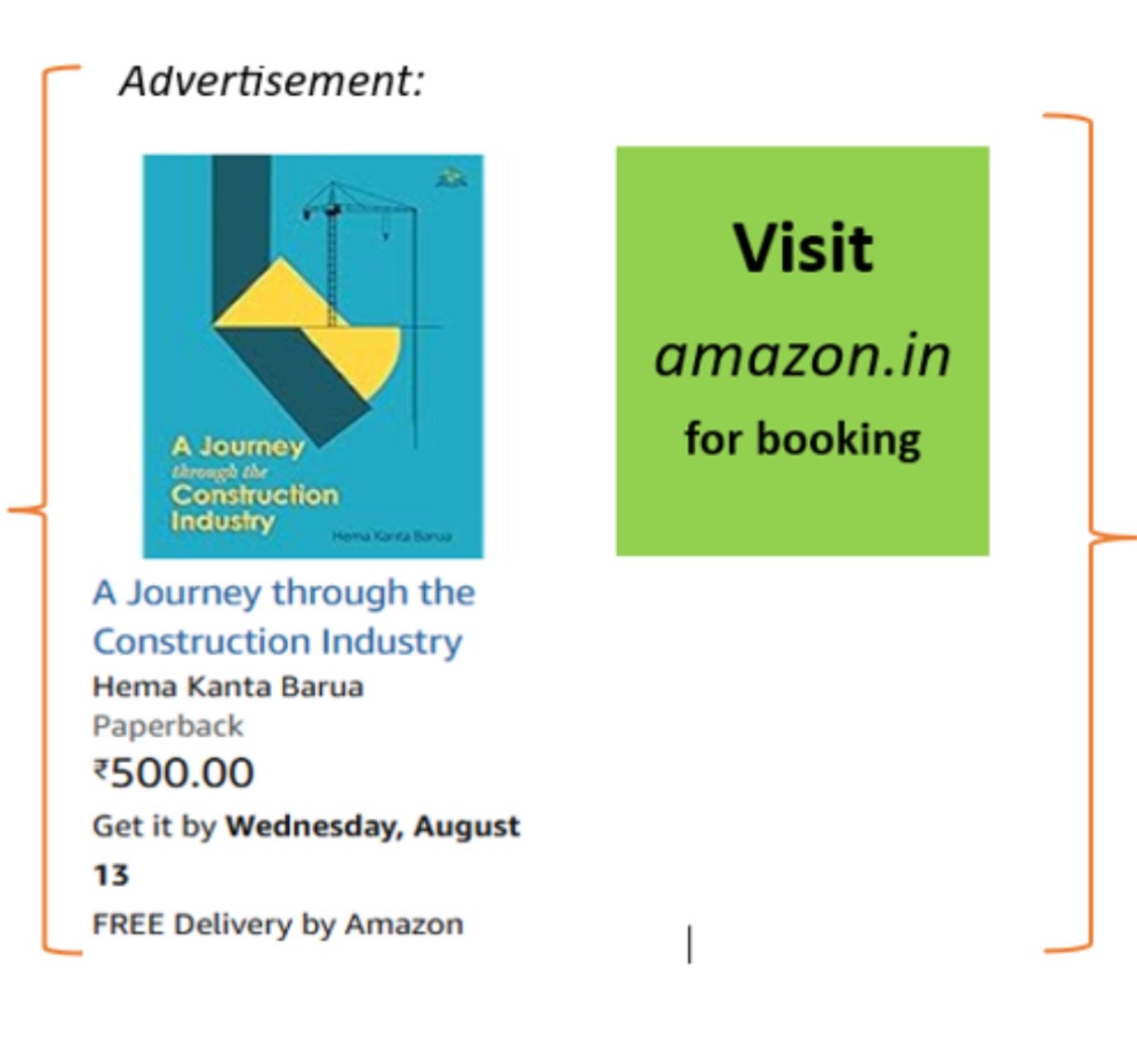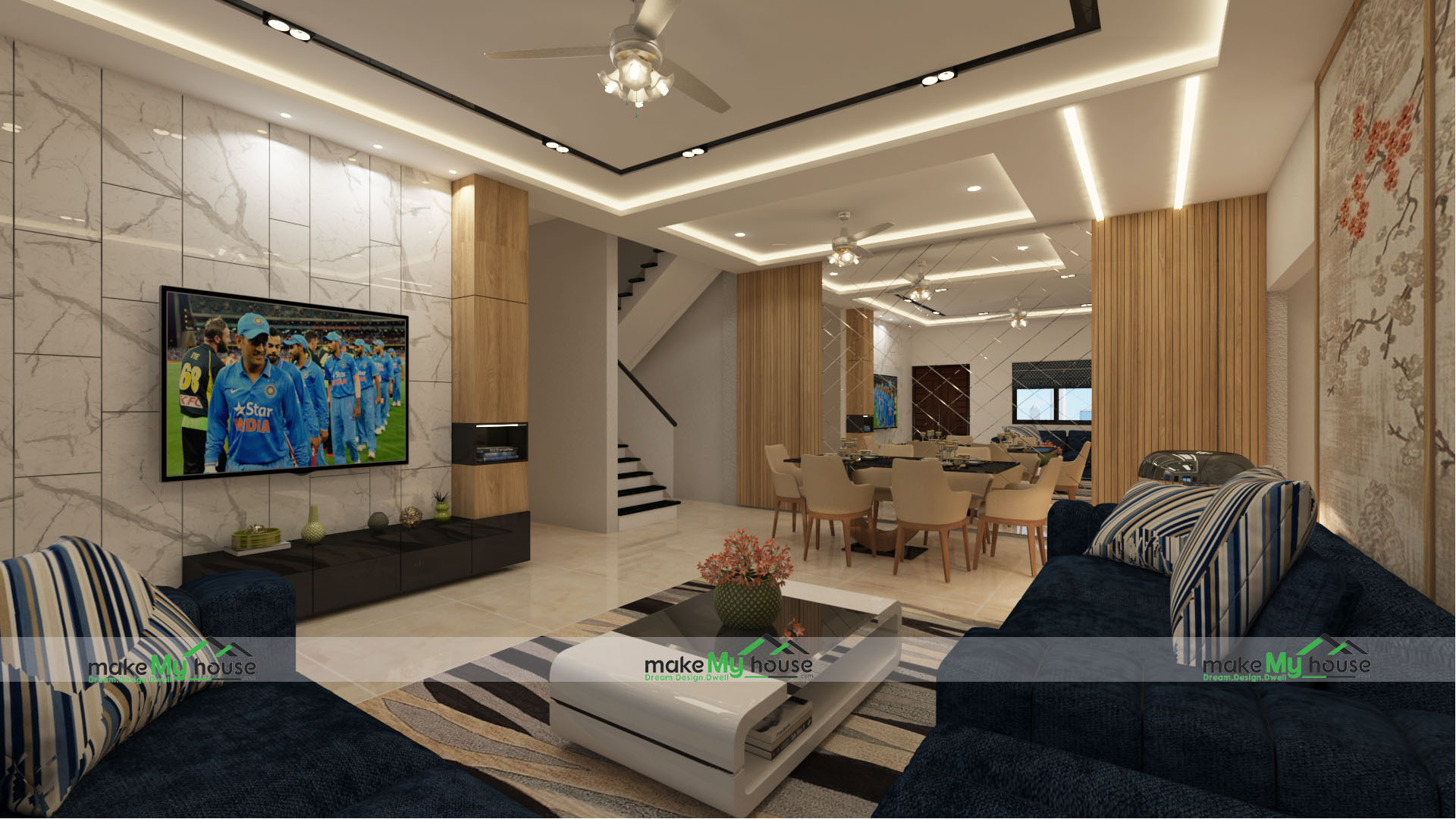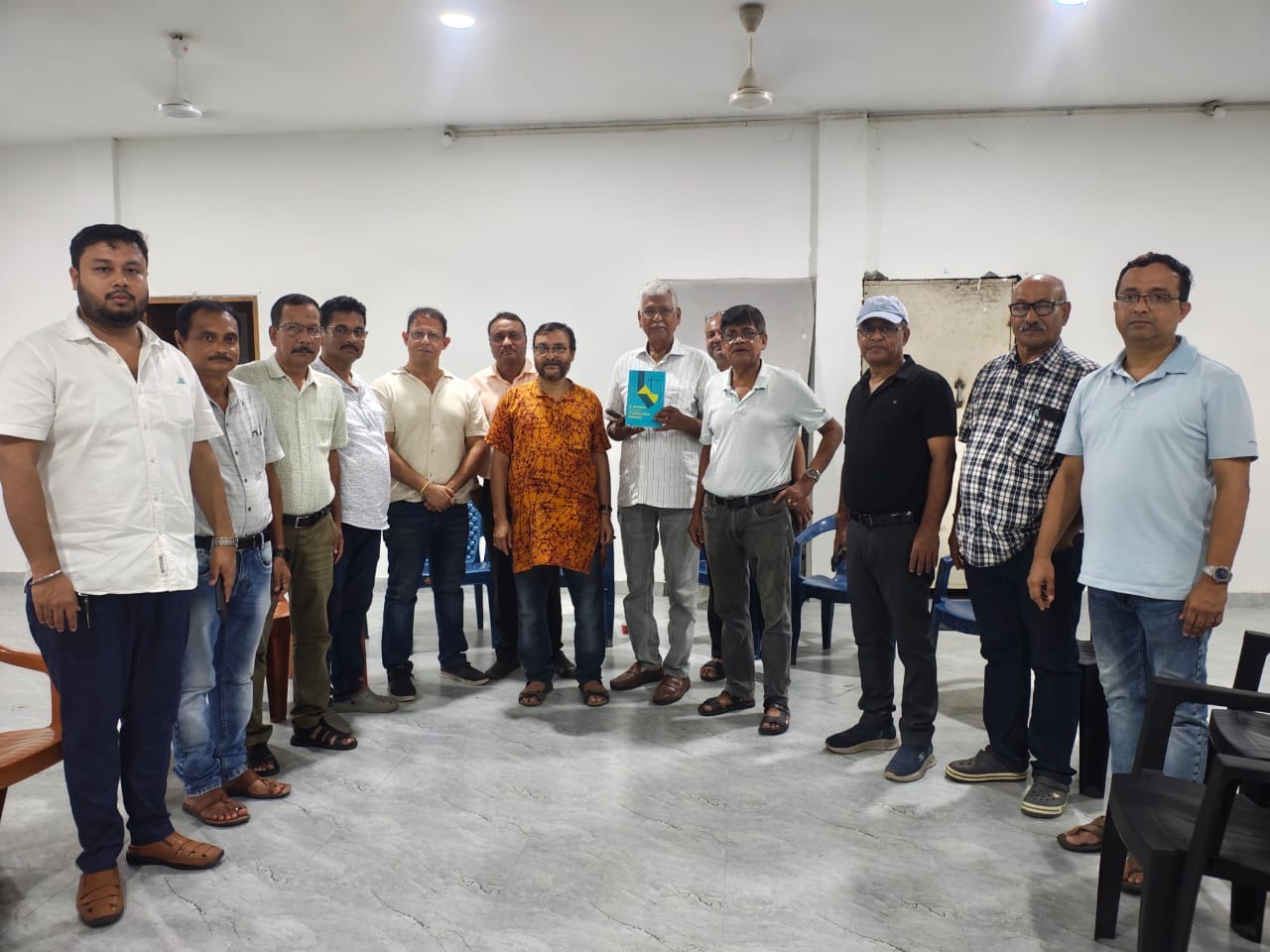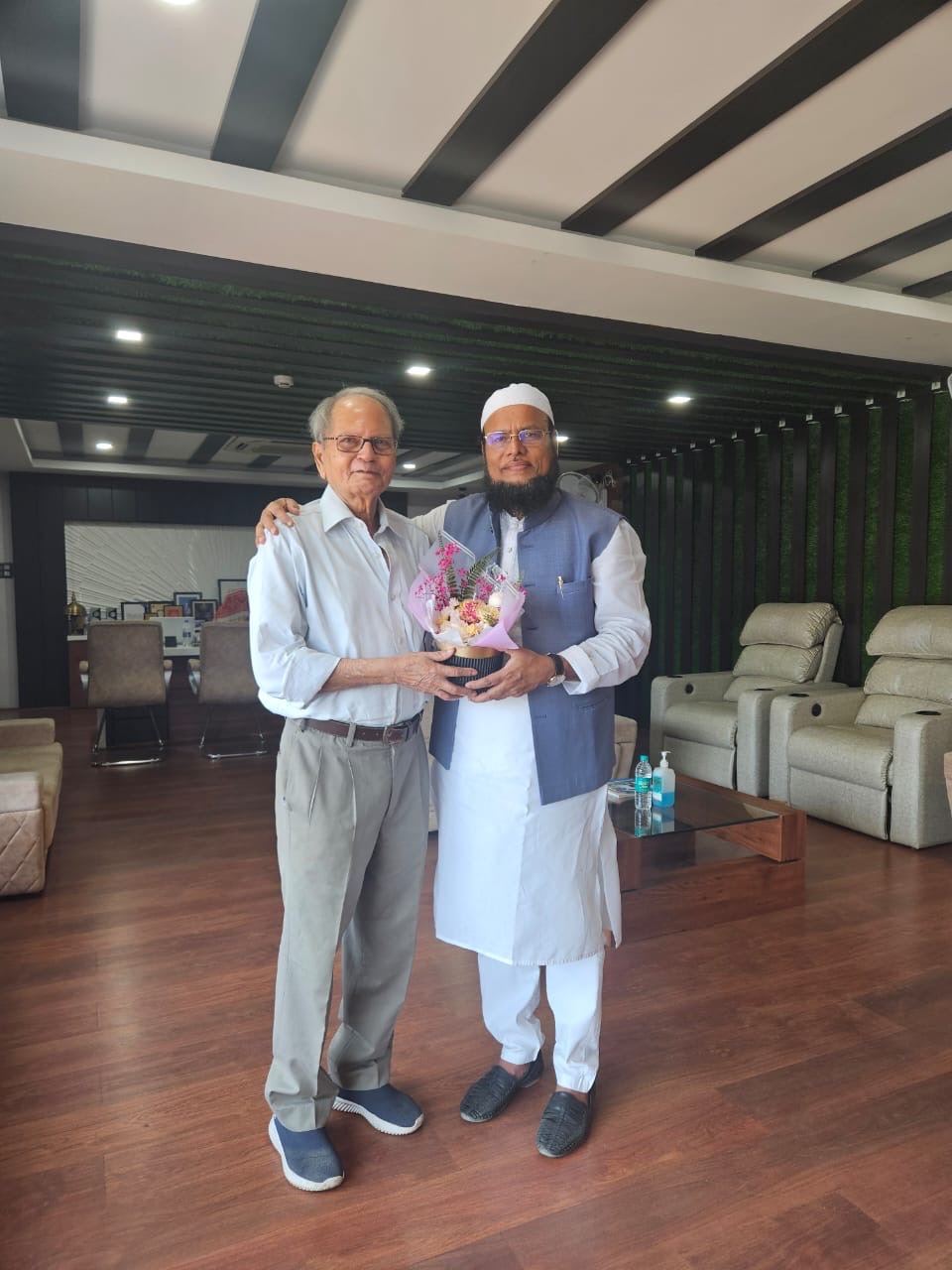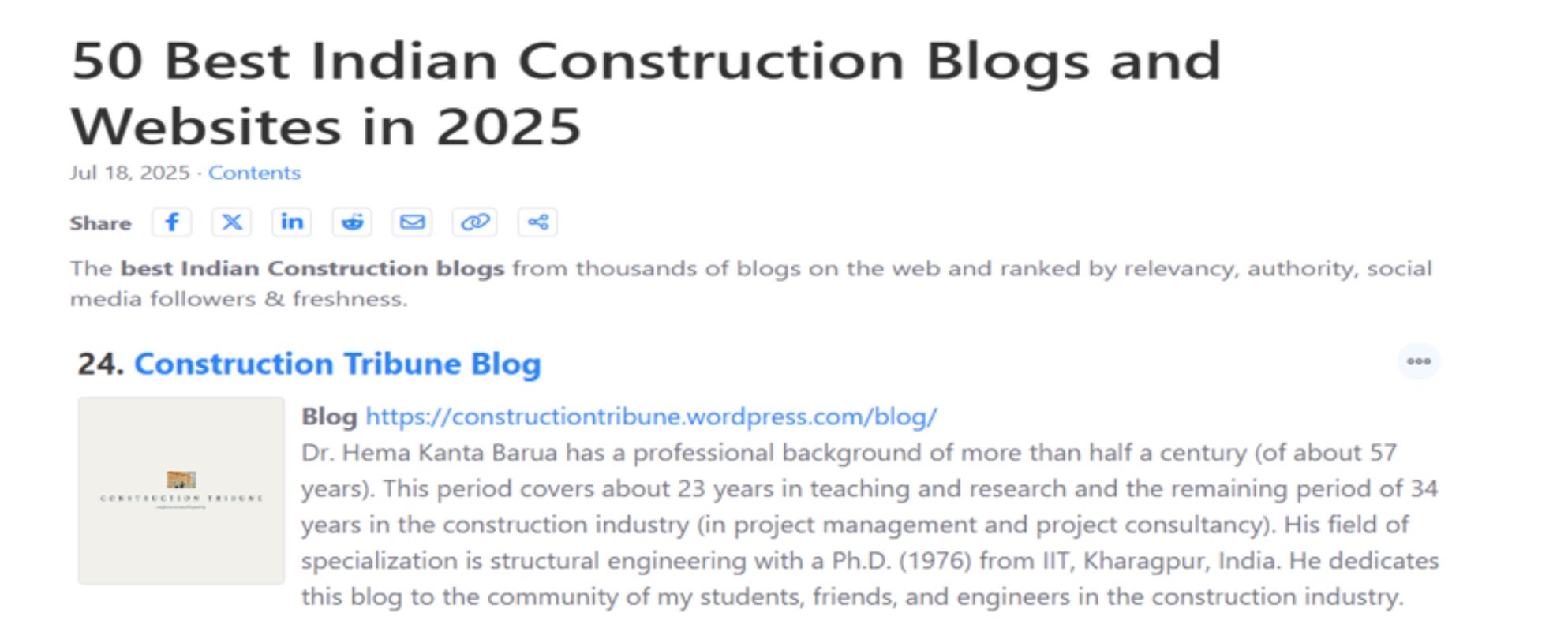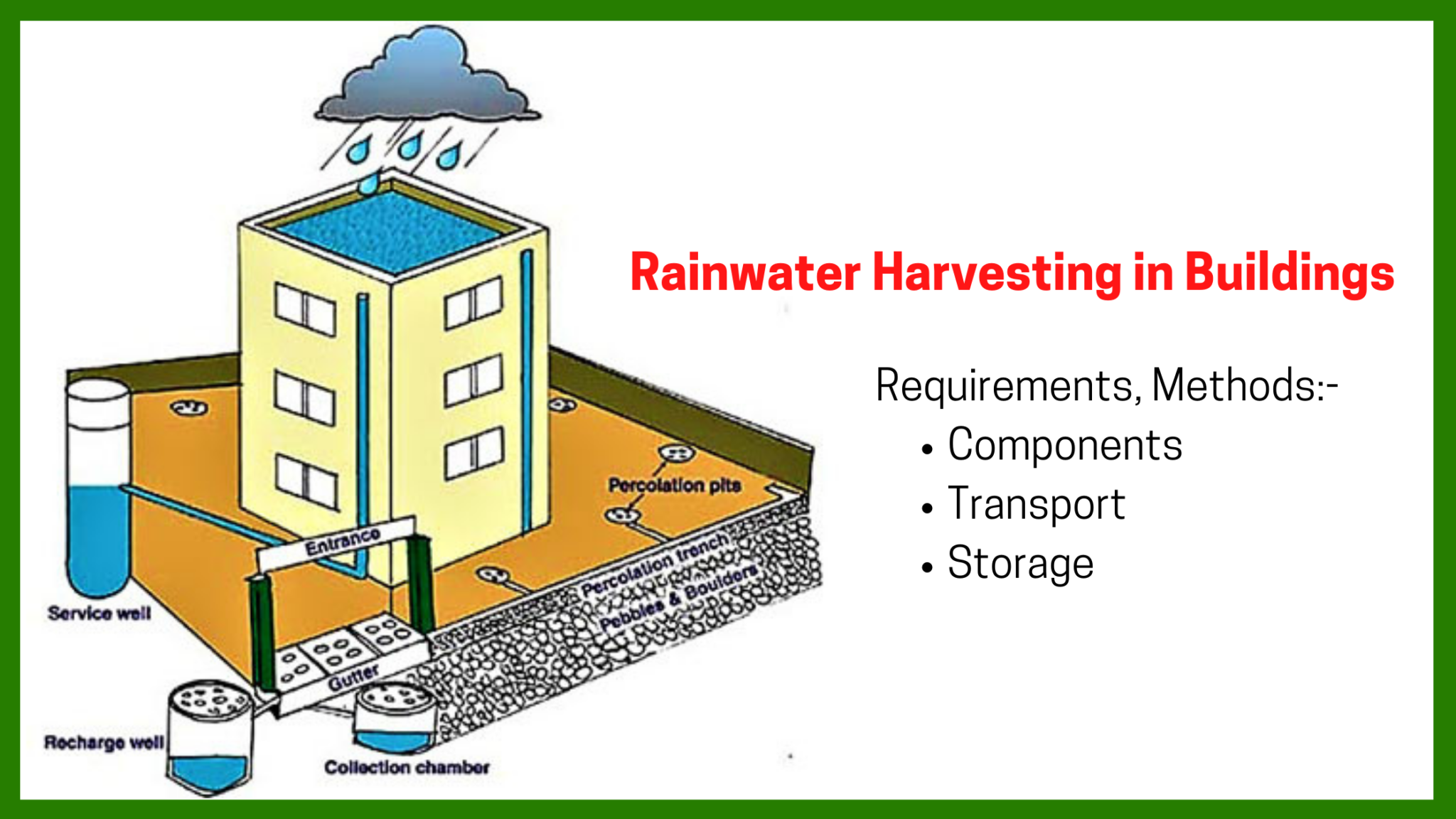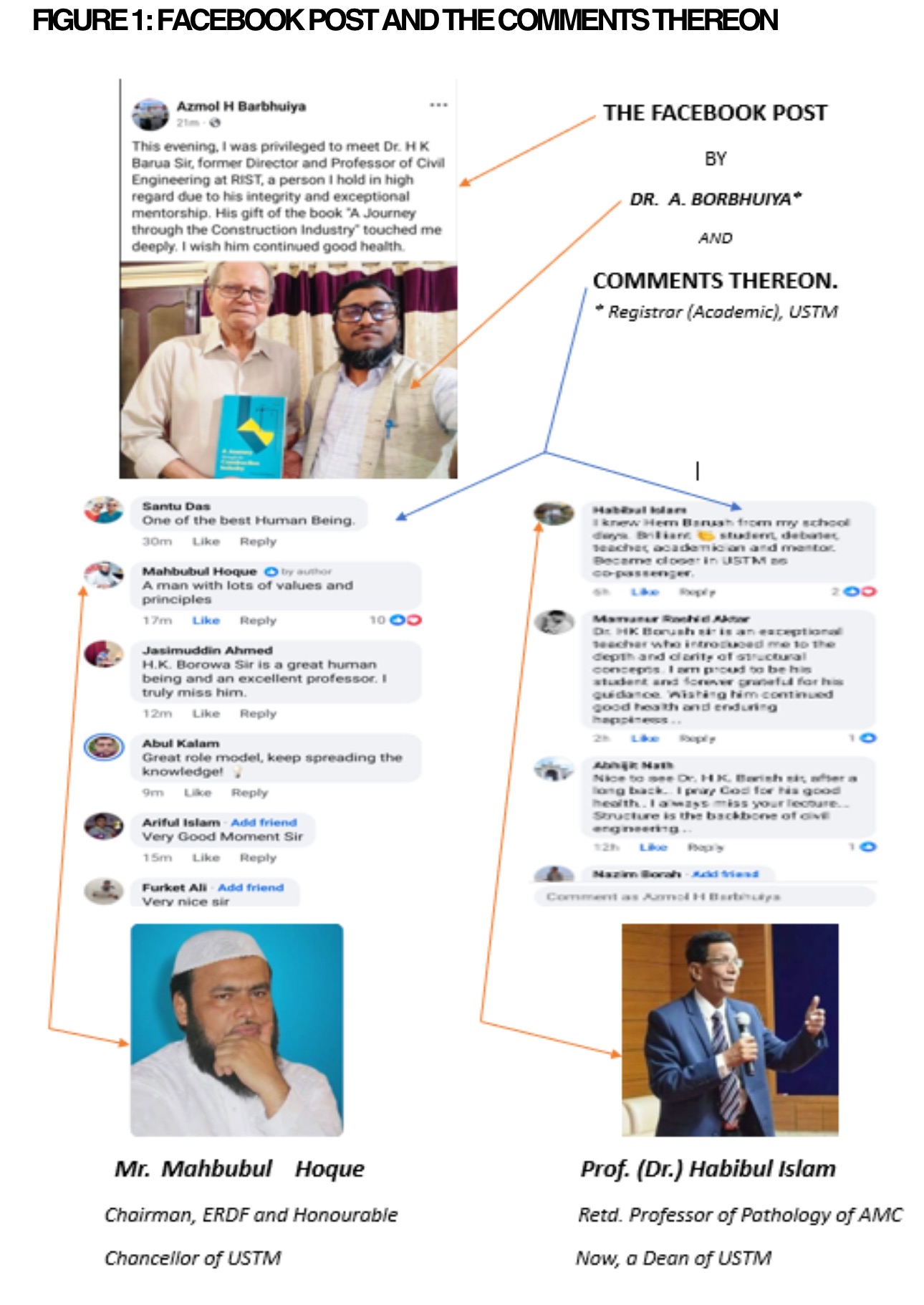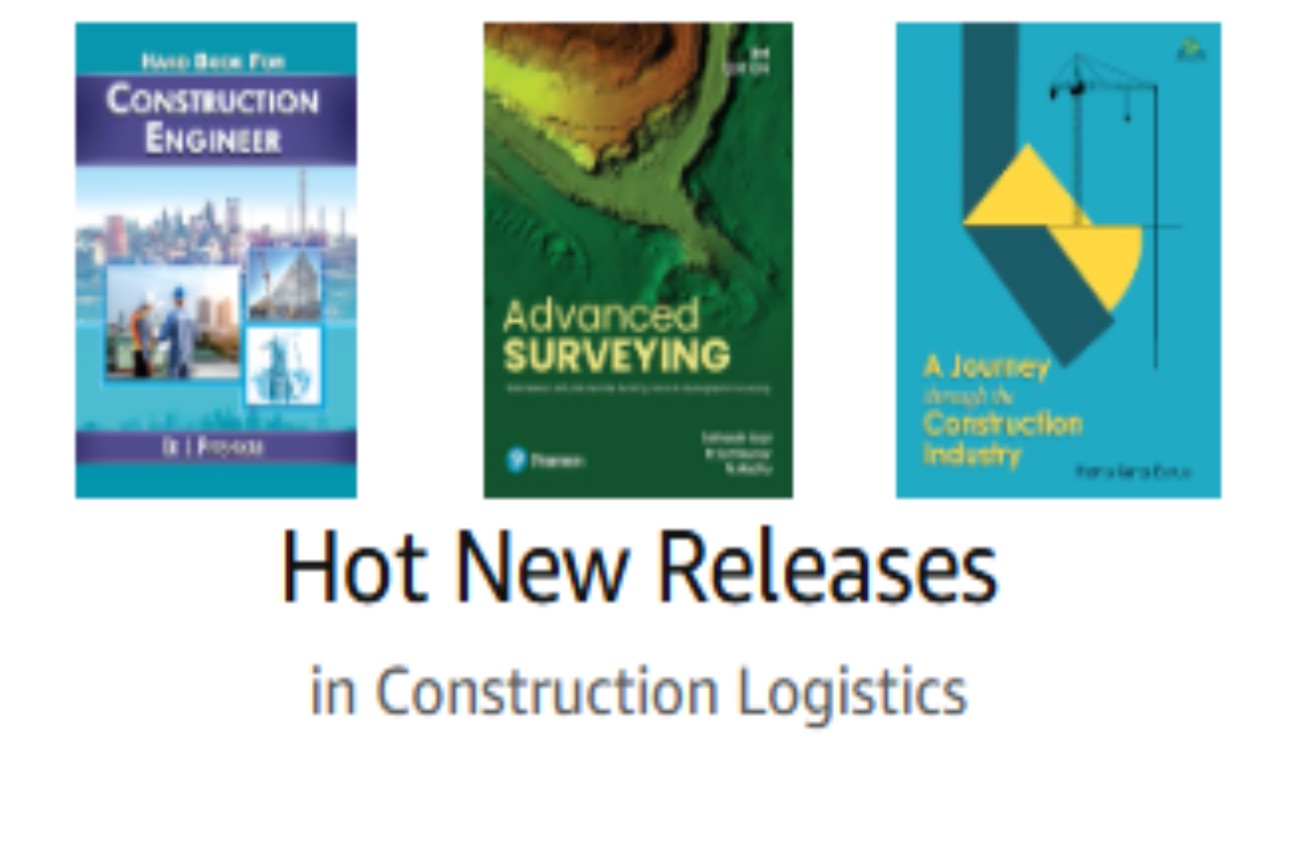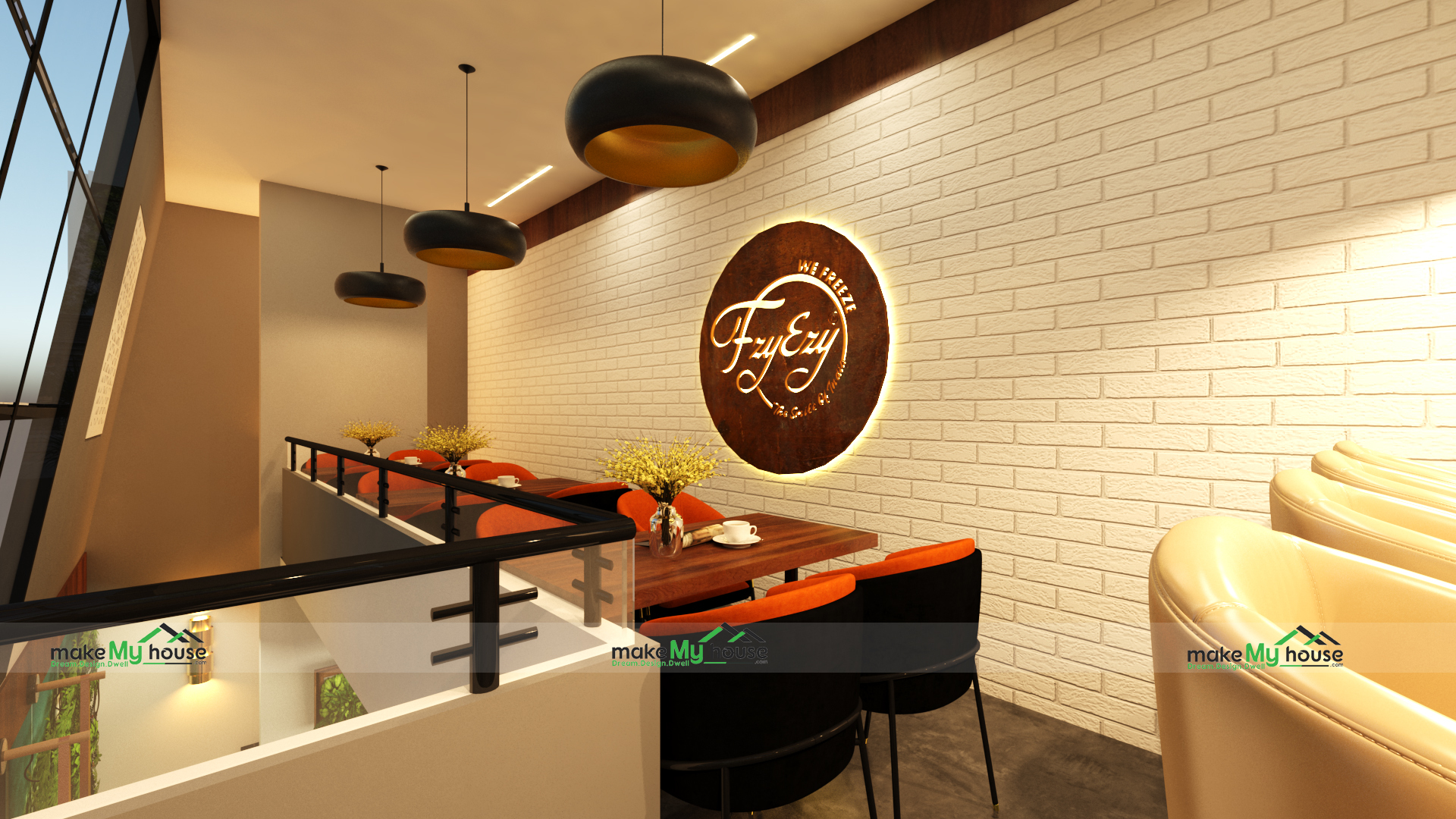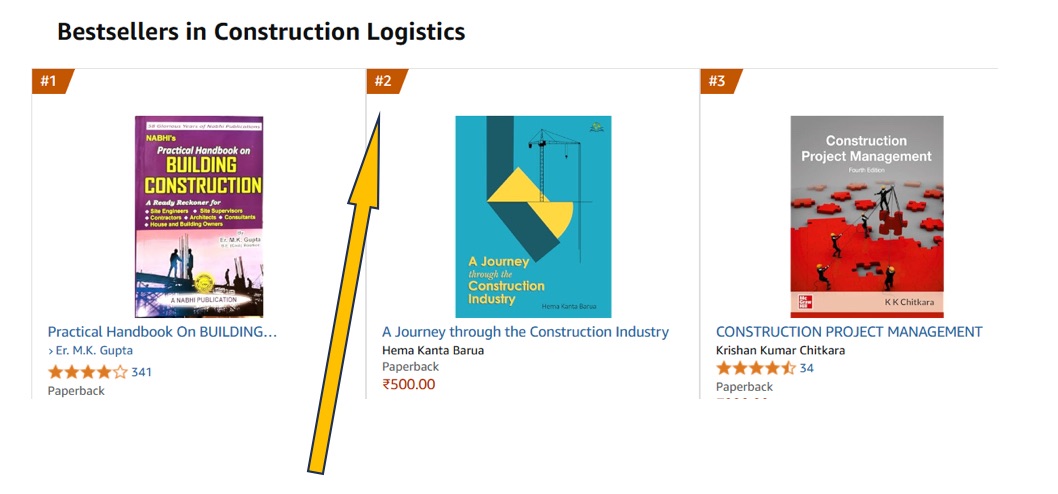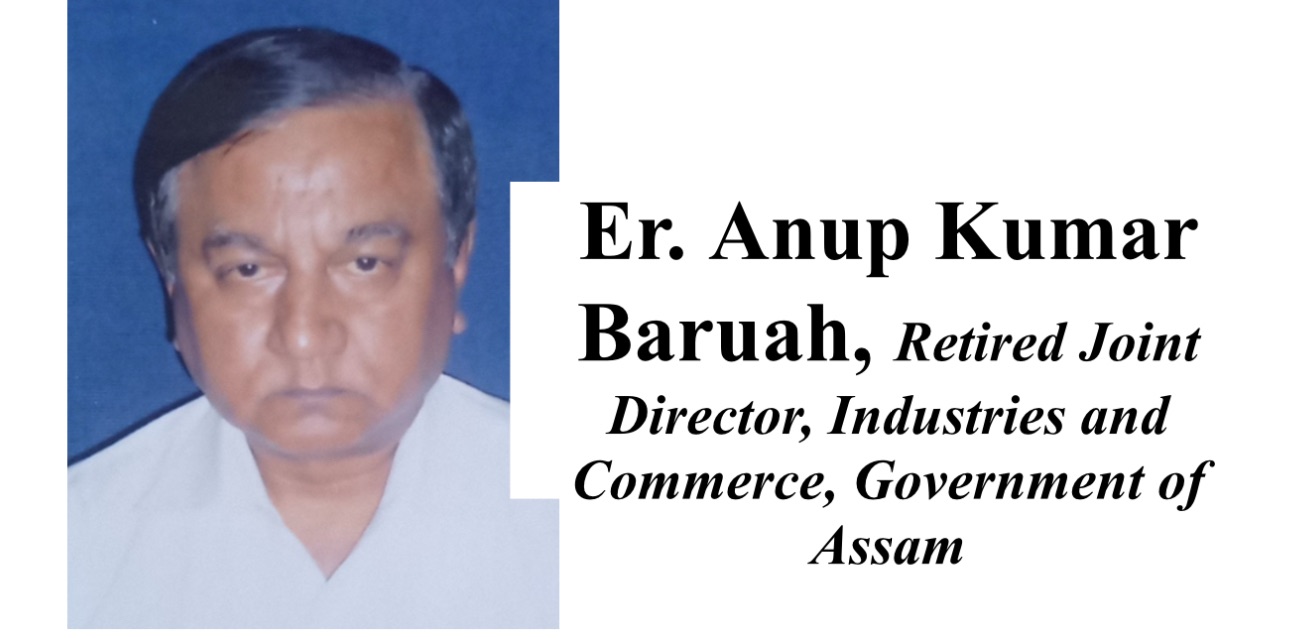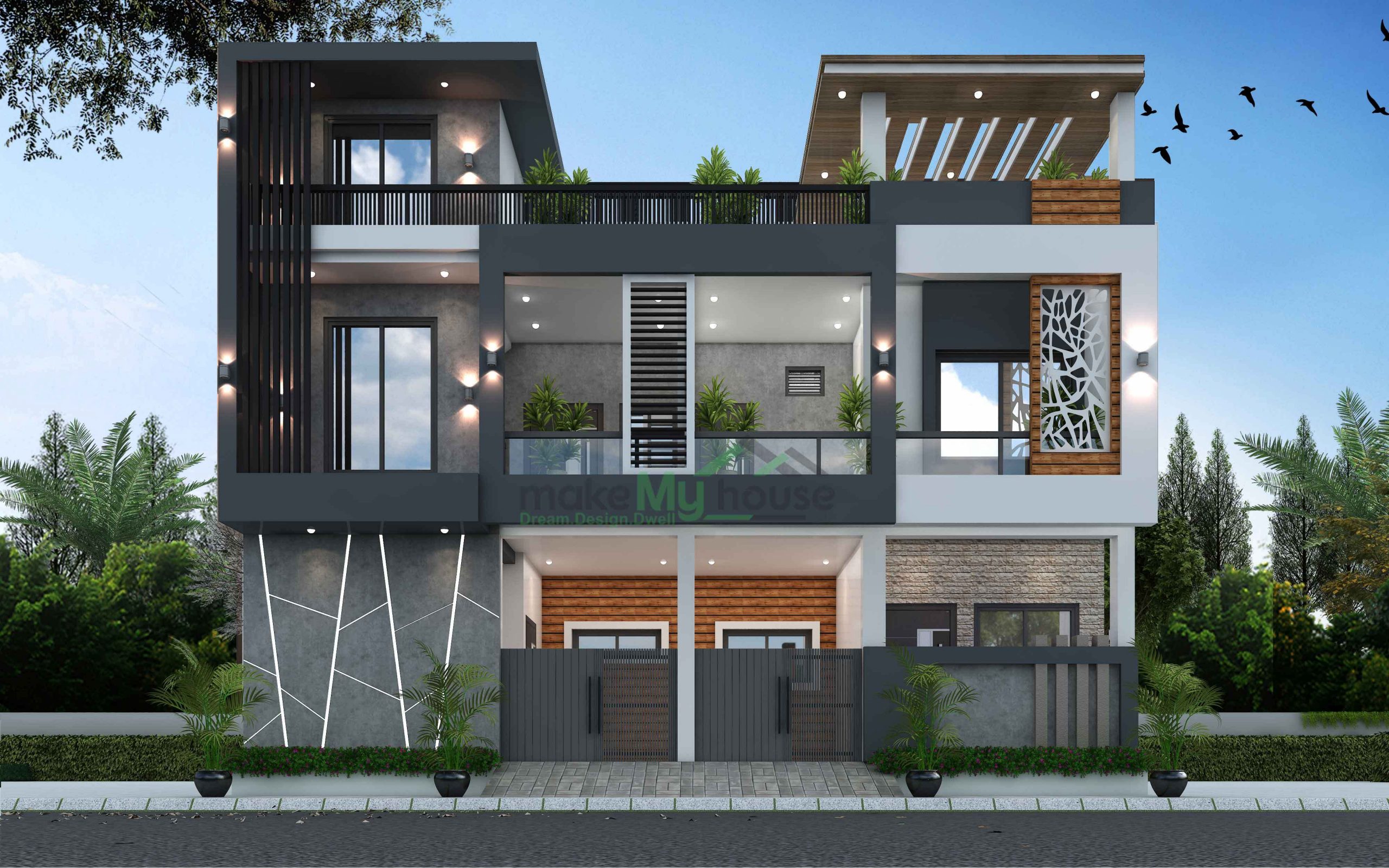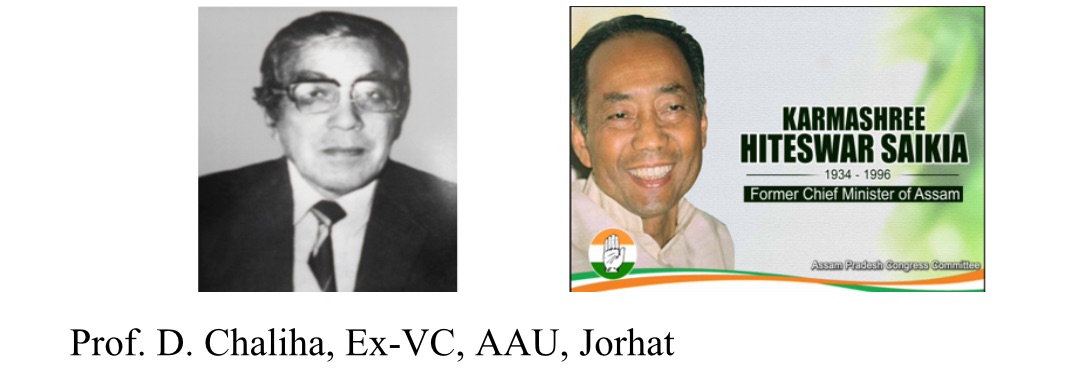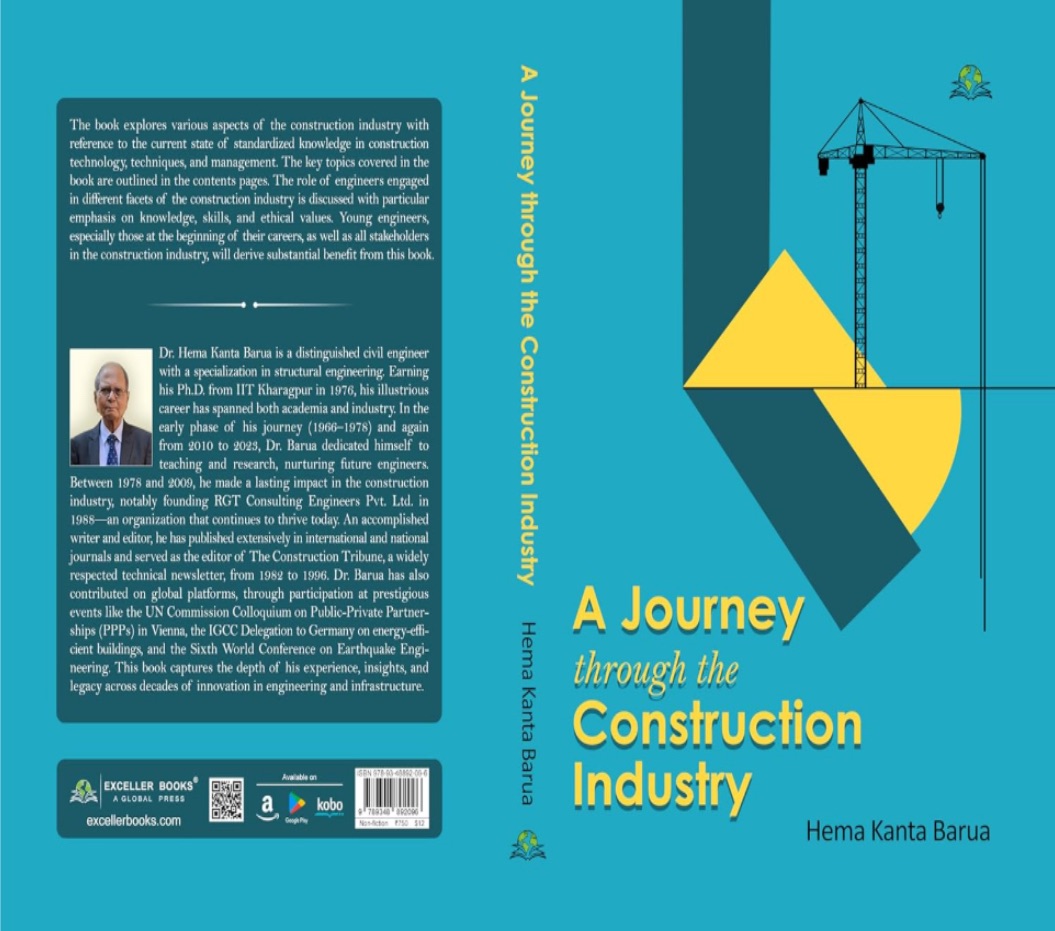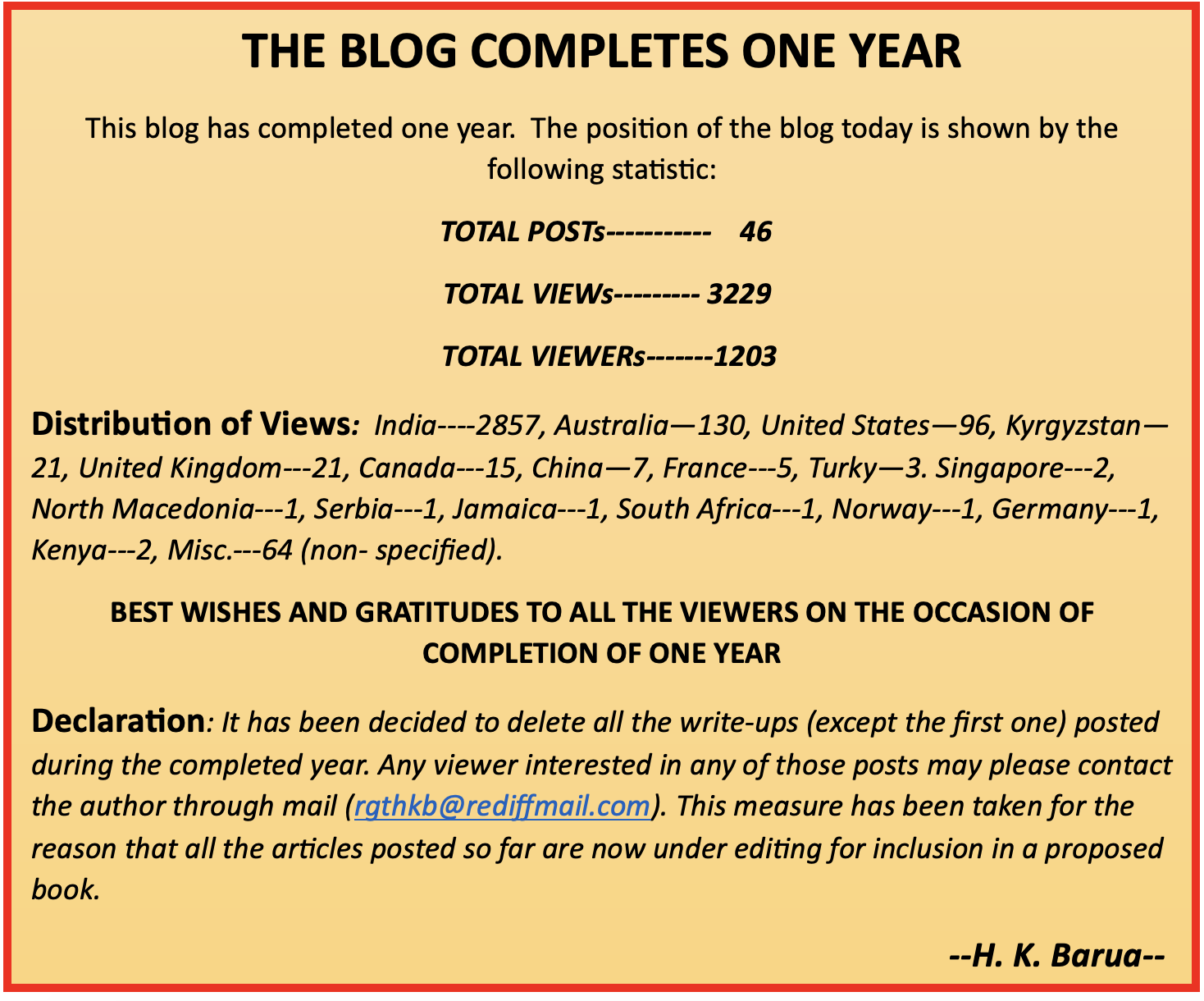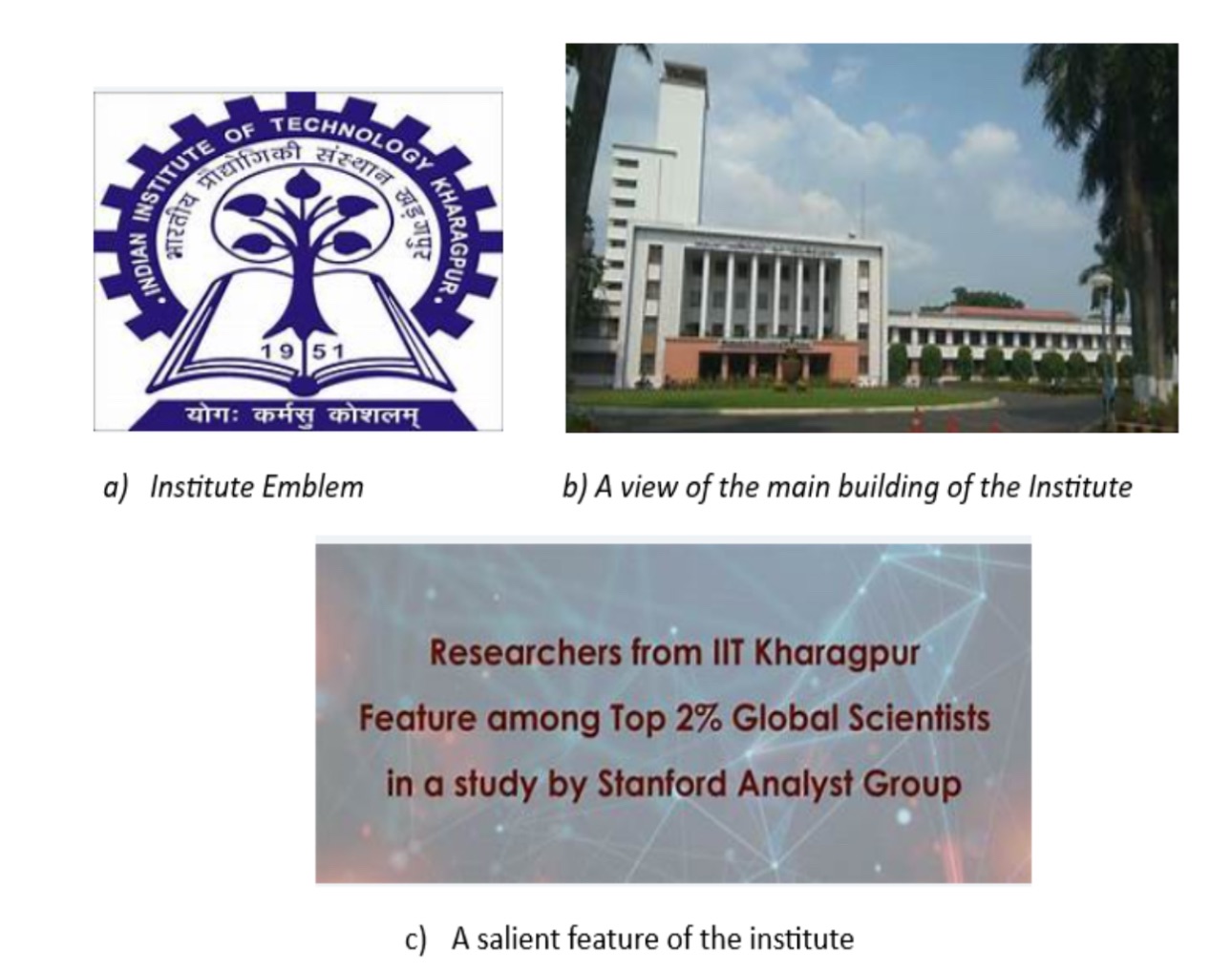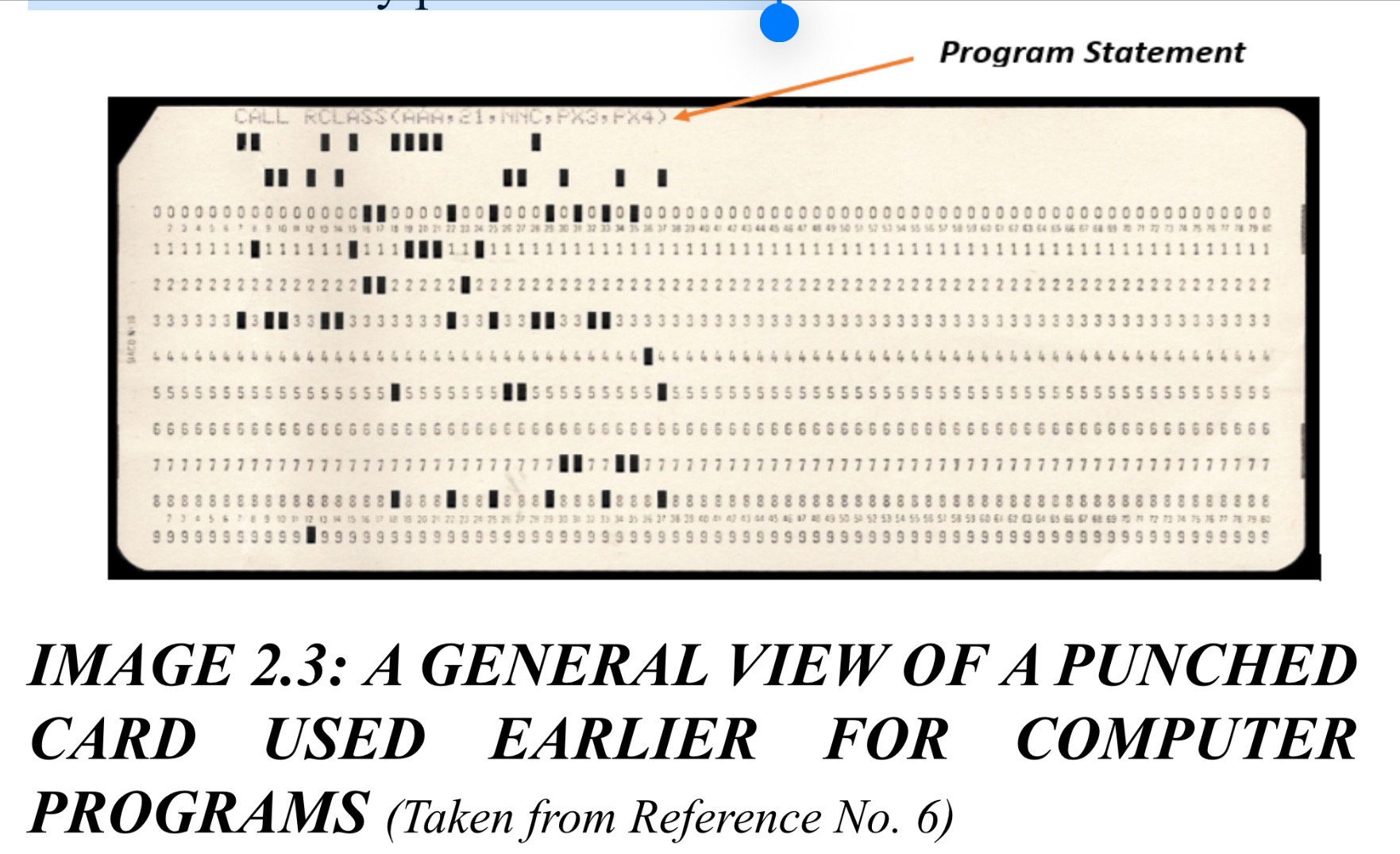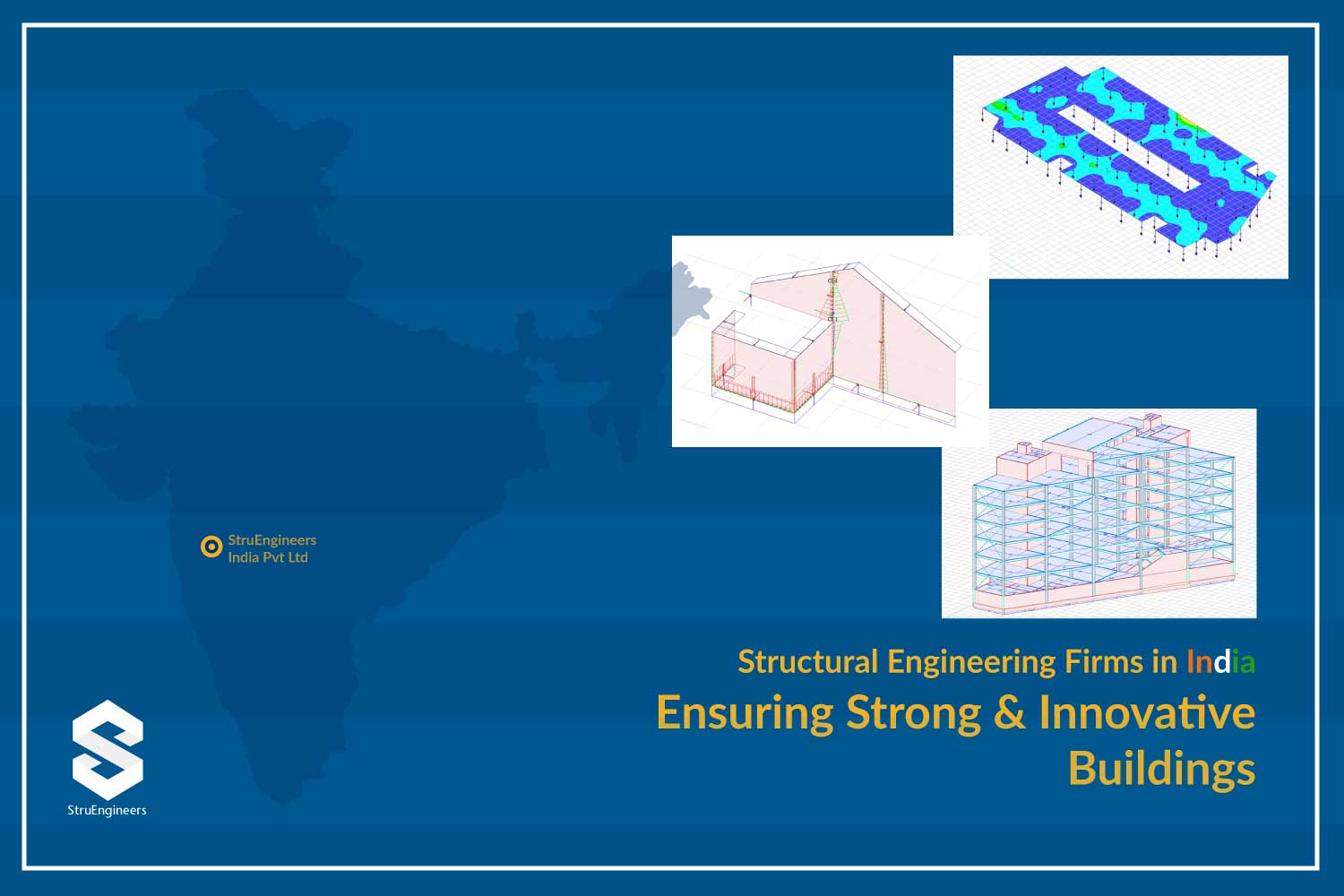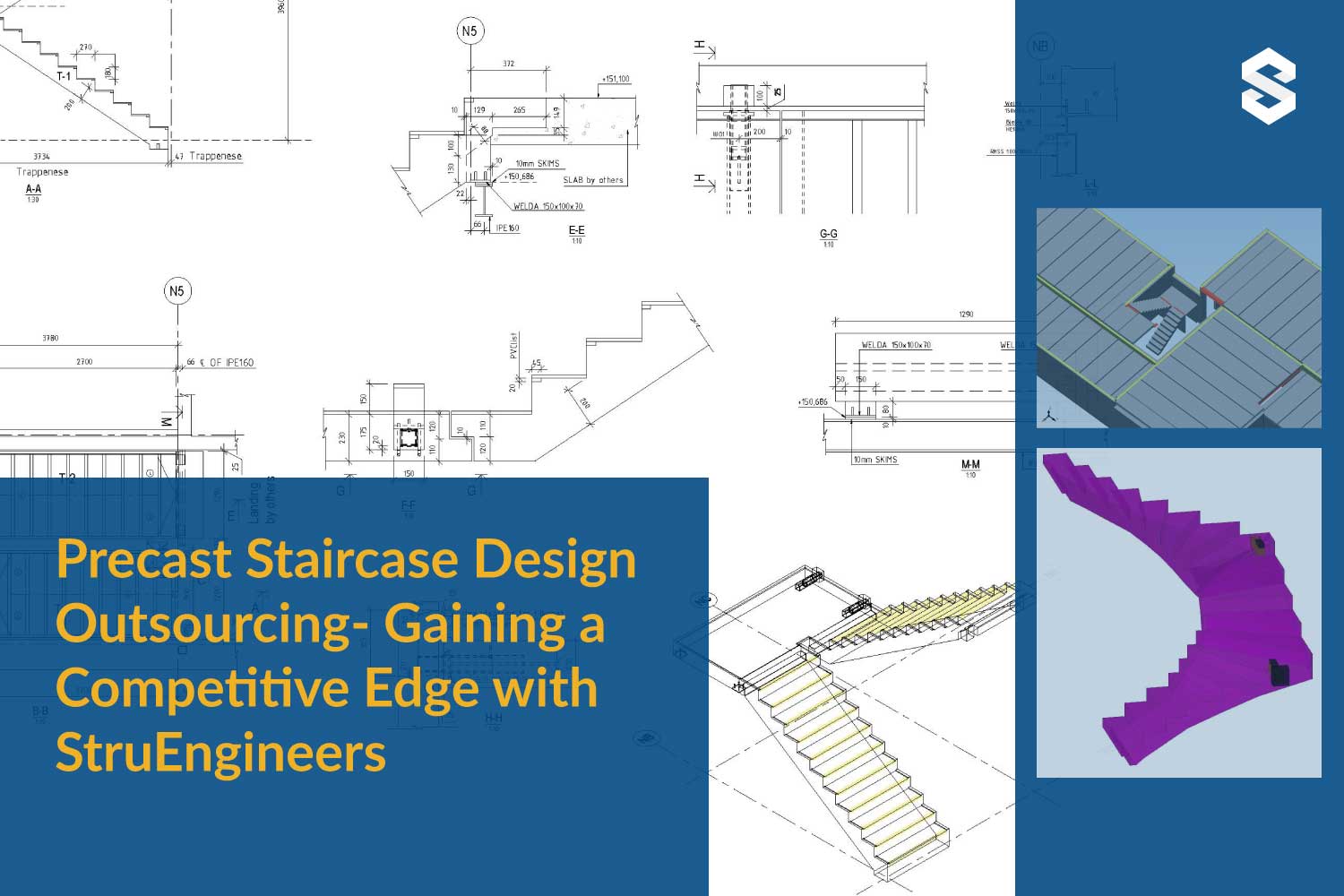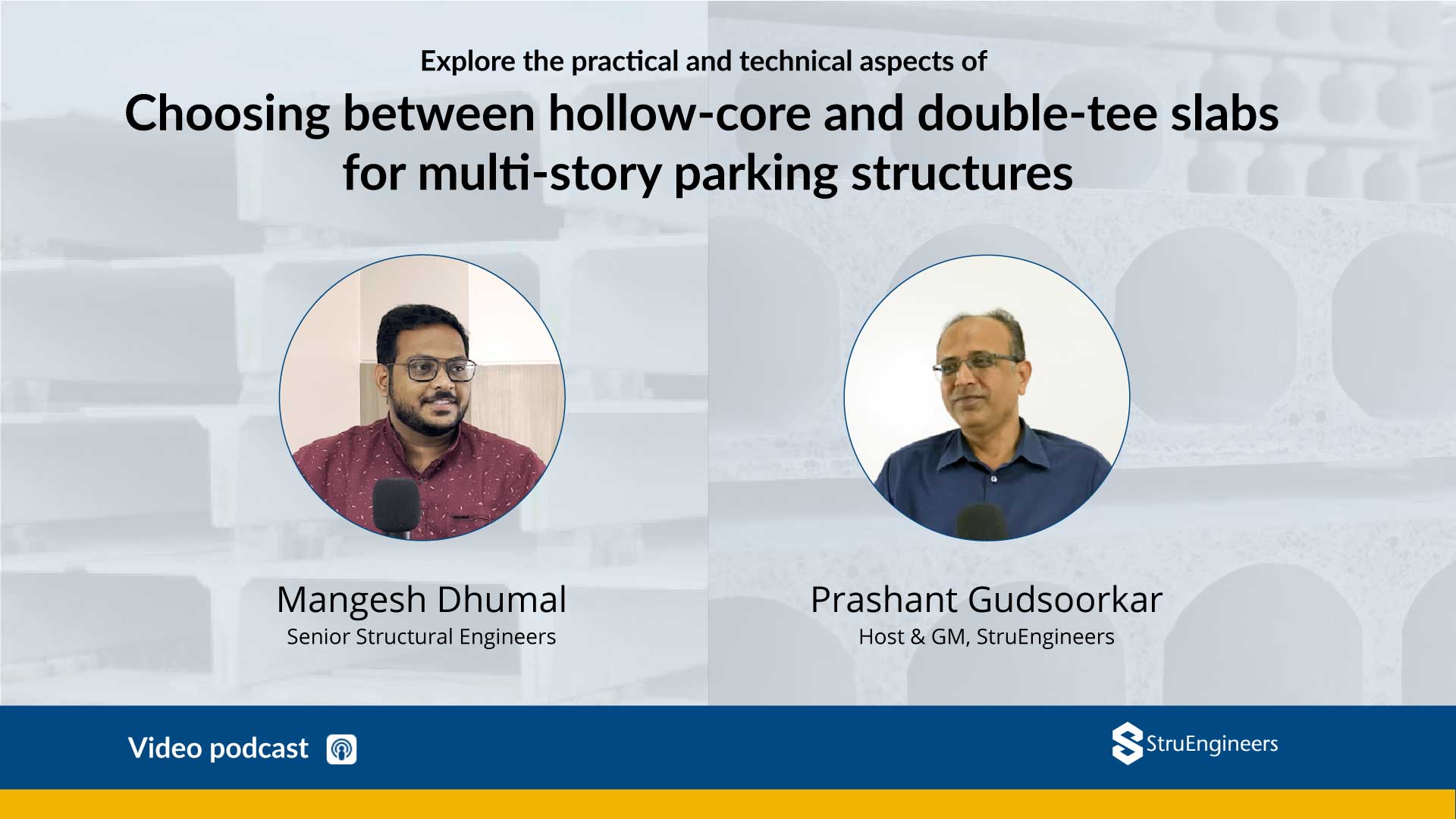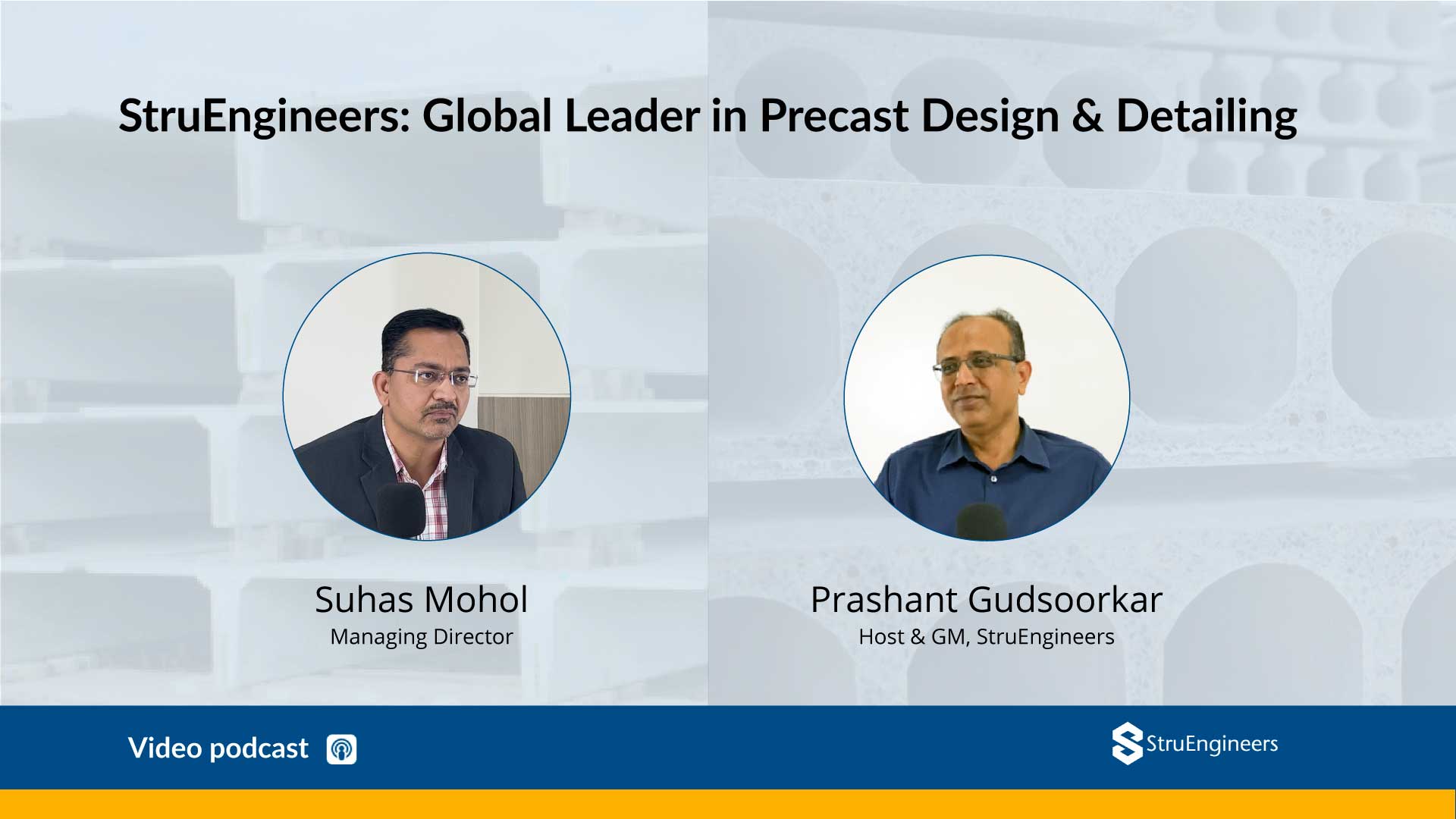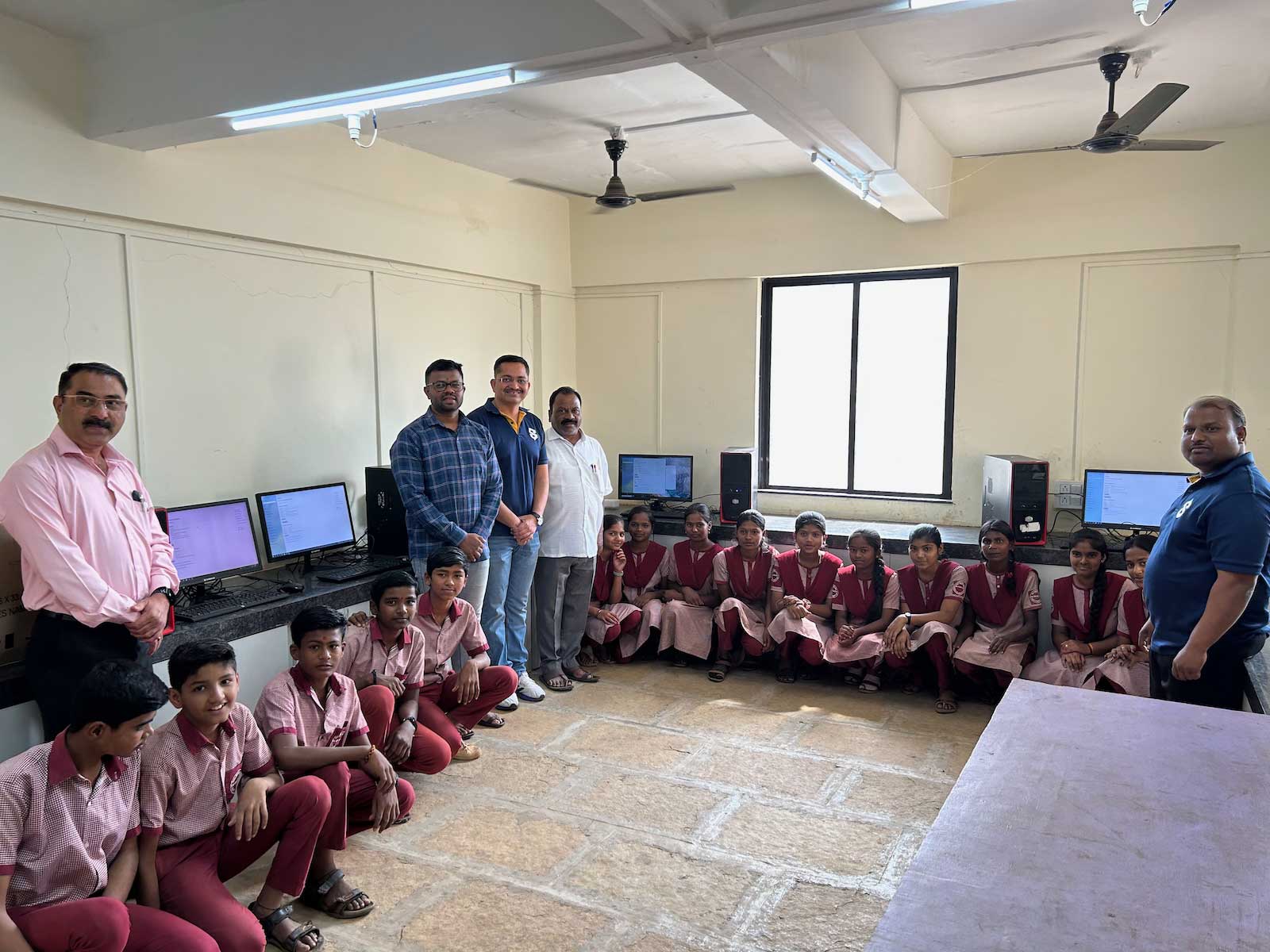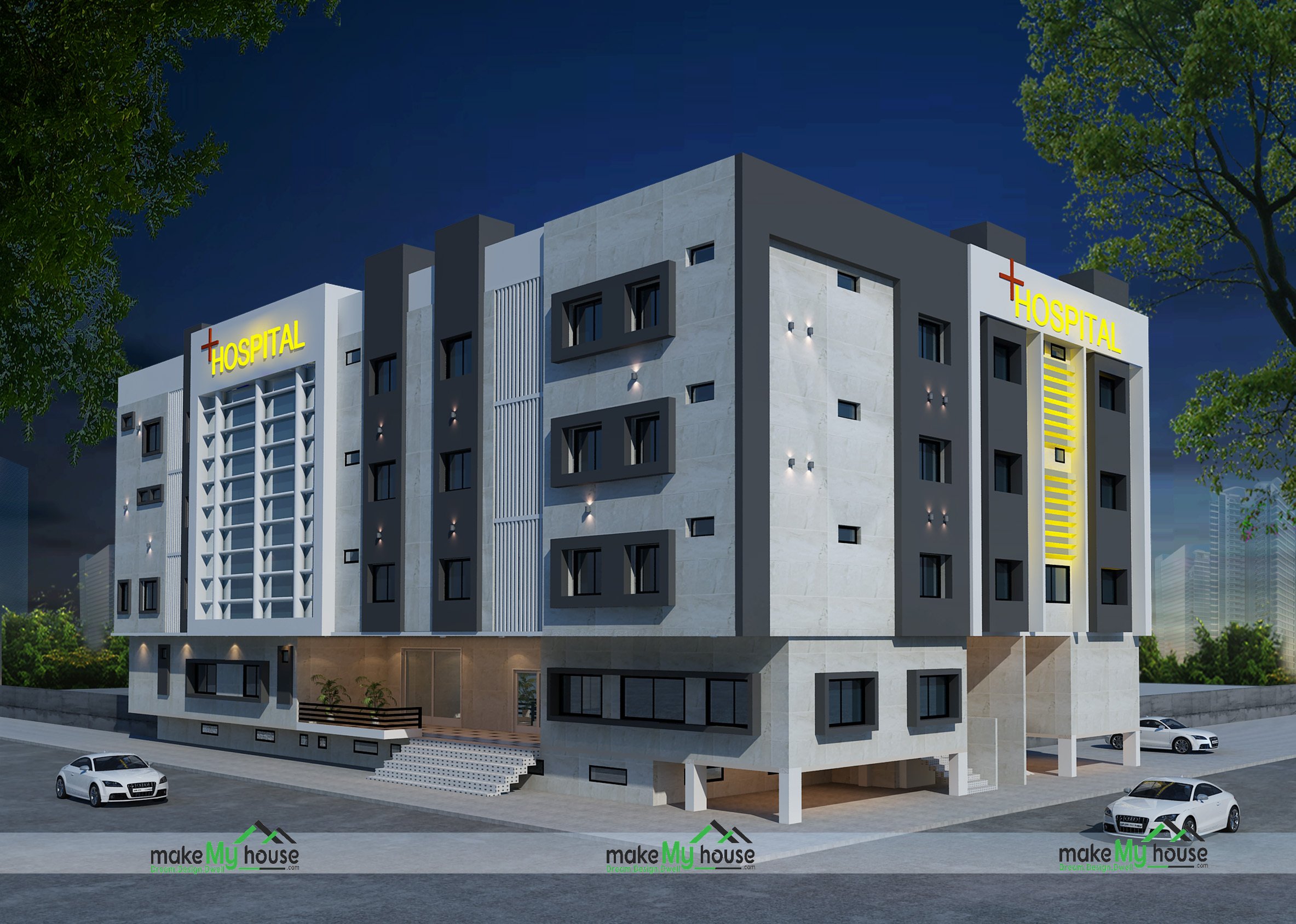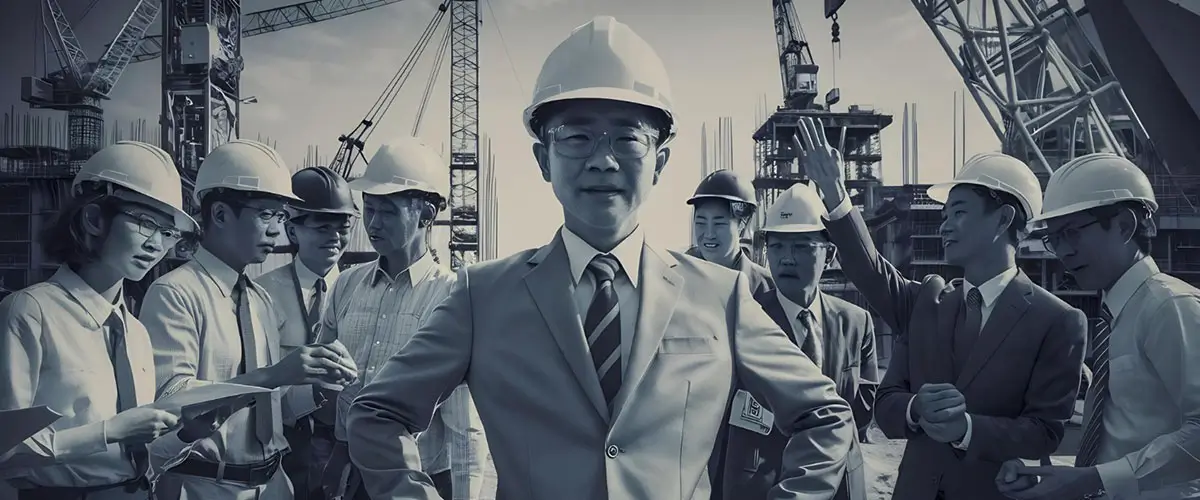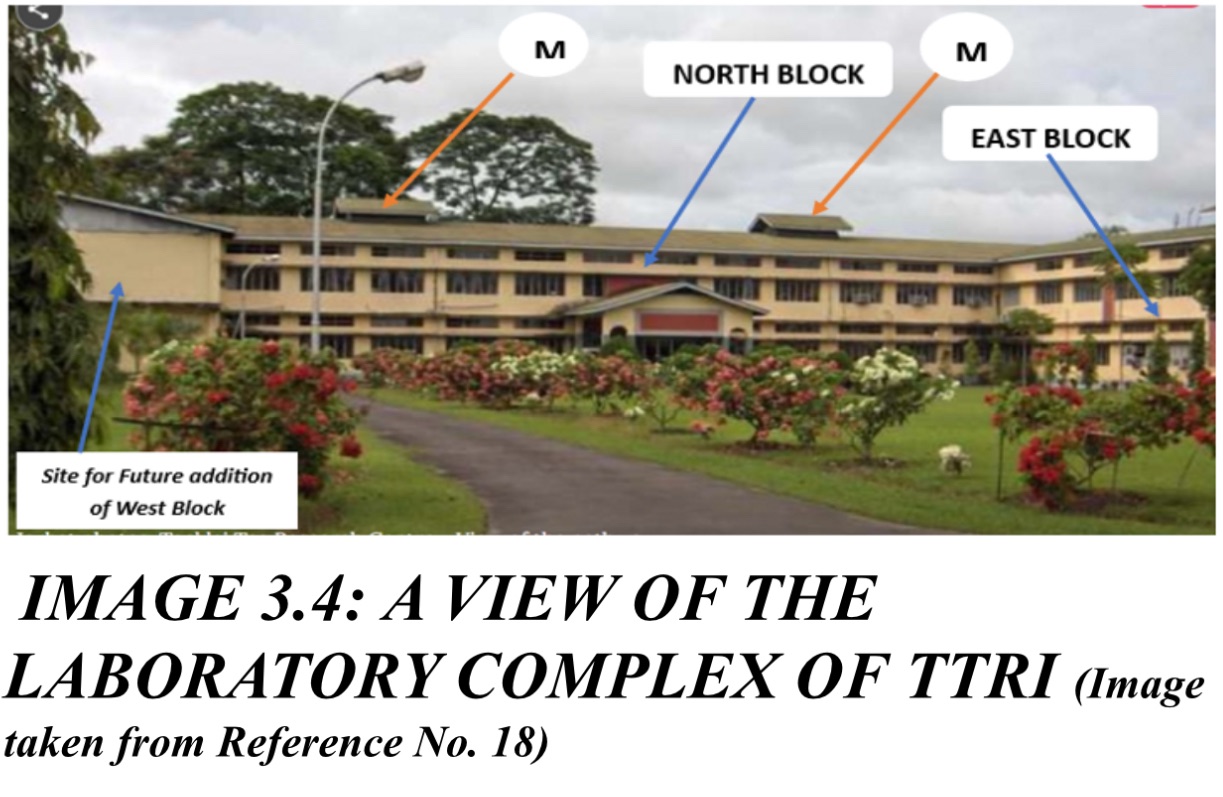
(In continuation with the last Post)
3.6 Incident CA-5 accountable to Professional Challenge
This incident relates to an assignment obtained from ONGC, Sivasagar through AGCC, Guwahati. The design project was duly completed and submitted for approval. It was during the process of according the final approval that a complication was created by some quarters primarily on account of the presence of Conflict of Interest. The issue was resolved, as described through Incident A under Article No. 7.5.1 (page 292) of my book9. To avoid repetition, this incident has been excluded herein. However, the incident already discussed9 has been given in Appendix–IIIA as a ready reference for the interested readers.
3.7 Incident CA-6 accountable to Professional Challenge
At one stage, a big project involving the construction of a public building came up with a sanctioned amount of a few crores in the city of Jorhat. One day, I was invited by the management body concerned for discussion in respect of allotting the works of consultancy for the project to me. Accordingly, I attended a meeting of different members of the management body/bodies concerned. There was detailed discussion on different aspects of the project. In course of the discussion, it was understood that the body was interested in making the allotment of the consultancy-part of the project to my company. However, I developed some reservations on account of the involvement of so many members some of whom were known to me through my association with them in other projects. It was almost decided for making the allotment of the work to me, as evidenced by the deliberations of different members present in the meeting. My rate for consultancy fees was also an aspect of the discussion.
By then, I had already a good stock of experiences of construction industry. I had the full appreciation of the fact that there is a particular group in the environment of the construction industry, that always remains in search of scopes to extract undue benefits from construction projects. In view of this tendency, by then I learnt to take precautionary measures to protect myself against this type of odds. In this case too, I was careful and therefore, towards the end of the meeting I spoke out in a clear voice as— Respected members, with your kind permission, I desire to state my position in clear terms. If you think, there are some persons in the helm of affairs, who are having vested interests in this project, with my folded hands, may I please state that I am truly not a consultant to be appointed. Because, I fight this type of vested interest tooth and nail. I do not want to enter into problems for the interest of the project. I will be grateful to you all, if you please give a due consideration to this aspect of my commitment to the projects for which I act as a consultant. In fact, there was no significant reactions to my statement except for a little bit of smiles from some members. Thereafter, the meeting came to an end. Eventually, I was not given the offer and I concluded that what I stated openly did play its expected purpose. I thanked God for giving me the mind to express myself in the meeting so openly and clearly. I was in a position to do so, since by then, I learnt to be judiciously selective in accepting consultancy projects. I have deliberately avoided the mention of the name of the organisation concerned with this incident for the reason of writing about this incident with the clear objective being basically to draw attention of younger generation of stakeholders of construction industry without casting aspersion on anybody. The incident to follow next deals with another situation of similar type.
3.8 Incident CA-7 accountable to Professional Challenge
As stated earlier, my company got a lot of projects from different colleges located in and around Jorhat district. This incident relates to a two-storied laboratory building planned, designed and supervised by us. The required fund was granted by the UGC and the payment of the grant was released to the college in instalments depending on the values of works executed. The work of execution was allotted to a contractor and supervised by us under the overall advice and guidance of a construction committee (CC) constituted by the principal. The payment to the contractor concerned used to be released on the basis of running bills duly prepared at our end and duly approved by the CC in place.
On completion of the work, the time for the preparation of the final bill payable to the contractor came. It was during that period, a complicacy developed. We did adopt the normal procedure of recording measurements for each item of schedule of works in the standard measurement book (MB), each and every page of which are duly signed by my engineer/myself and the contractor or his authorised representative. Even the running bills were based on the measurements so recorded in the MB. The principal used to go by himself or to send his representatives a number of times to the UGC office located in Delhi for pursuing the matter of release of the instalments of the fund already sanctioned for the said building. In this process of pursuance, the college truly spent a substantial amount of money including tips paid at times to some persons in Delhi. I was advised by the principal to take care of the total amount spent on account of the pursuance with UGC in the final bill, thereby creating an embarrassing situation for me. I raised the matter in the CC and explained my clear inability to account for that expenditure through the process of inflating the measured quantities of some items of work. However, I did suggest an alternative way to account for that expenditure in the final bill. I needed a letter from the principal for the total amount to be included as a contingency expenditure spent by the principal in miscellaneous works for facilitating the execution of the building. Only on receipt of a letter to that effect from the principal, I agreed to include that amount in the final bill as contingency expenditure. However, that letter did not come to me and eventually I submitted the final bill as prepared on the basis of measurements duly recorded in the MB. I did not know the ultimate fate of the amount spent in the process of getting the release of fund from UGC.
Even today, I consider the task of inflating the measured quantities of any project work as a crime on the part ofengineer certifying the construction bills.
3.9 Incident CA-8 accountable to Professional Challenge
At a certain stage, I came in contact with a World Bank consultant based in London. He bagged a big project funded by the WB. The project was for the development of border roads in Assam. In that connection, the London-based consultant was in search of a competent consultant based in Assam to act as a local consultant for the project. Through a firm of one of my ex-students, the interest was shown in my company for the said purpose. I too showed my interest in the project. Eventually, a detailed discussion was held in Guwahati with the London-based WB consultant. I was told that the project was already allotted to him by the WB. As per the condition of the allotment, he had to place a competent local-based consultant on his behalf to act as a local consultant whose primary objective would be to certify all works to be executed for the eventual payment to the parties concerned. This was indeed a huge responsibility. In addition, it was made clear to me that even for the appointment of the local-consultant, the London-based consultant would have to obtain the approval from the WB as per the conditions laid down by the WB. Therefore, that round of discussion rounded off with the decision to the effect that I would apply to the main consultant (London-based consultant) who will take the necessary follow-up actions for getting my company approved by WB for subsequent appointment as local consultant to be placed by the main consultant. I was further advised to attach due documents from the state’s top educational and research institutions in support of my company.
As advised, I approached IIT, Guwahati, Assam Engineering College, Guwahati, Jorhat Engineering College, Jorhat and Assam Agricultural University, Jorhat. I am still grateful to all these institutes for giving me the necessary certificates to the effect that they (all these four institutes) would provide me the necessary technical supports as and when required during the execution period of the project under discussion. I applied to the main consultant as per the discussion we had. After some time, I was invited to Guwahati again for a discussion with the main consultant. Accordingly, I had the discussion for the second time in Guwahati. I was informed of the approval accorded to them (the main consultant) for engaging my company with the formal appointment of my company as the local consultant. On knowing that, I became deeply concerned over different aspects of implications of such an assignment of heavy responsibilities involved in the roles to be played as a local consultant. The main consultant possibly could read my mind and he stated—-Dr. Barua, you do not worry, we will keep on coming during execution of the project to assist you. In addition, you know, we have already come in terms with the top officials concerned from the side of the government. As such, we are assured of all necessary supports. In fact, the aspect of commission (of the hidden type) has been duly taken care of. In fact, the last few words relating to the commission of the hidden type increased my tension. I immediately responded—I will take a few days more to assess my present load of consultancy works and think over the issue of the requirement of additional manpower of my company in case this assignment is finally accepted. I plan to come back to you within a week. After that, I will finally request you to issue the appointment letter with due consideration to my company’s fee structure.
I realised the importance of a project of this type. However, I got frightened in view of the possibilities of the negative impact likely to be given rise to by the influence of aspects of commission structure of the hidden type, as hinted to me during the last discussion I had with the main consultant (as referred to in the preceding para). Eventually, I decided to decline the offer awaiting the final allotment order from the main consultant. Obviously, this amounted to a decision that turned out to be a loss of a huge scope to raise the financial status of my company. Truly, I did not mind it in view of my conviction to refrain from unethical adjustment of expenditures through bills to contractors, as reflected through the last incident as well.
3.10 Incident CA-9 accountable to Professional Challenge
3.10.1 General
In the early part of 1990s, I, in the capacity of the Managing Director of my company got the scope of planning, designing and supervising the construction of the laboratory complex of TTRI. The construction of the North Block (First Phase) and the East Block (Second Phase) were completed in all respects by 1996. Now, all the main laboratories of this premier tea research institute of the world are housed in the two blocks completed in two phases in continuation. The view of this laboratory complex appears in Image 3.4 given below. There has been the provision for the future construction of the West Block at the location indicated in the given image

While carrying out the architectural treatment of this building, the due consideration to the heritage values of existing buildings, which were built during the British Era in the TTRI complex was given. In addition, the CGI roofing sheets with tubular steel roof- structure (with well-spaced monitors, as marked ‘M’ in Image 3.4) were based on the technical considerations discussed in one19 of my published papers. The situations leading to the allotment of this project to us and a part of the challenges fought during the execution of the North Block (first phase) were discussed in the Incident B under article 7.5.2 on pp 293—295 of my book9. This incident appears in Appendix—IIIB for ready reference by the readers. Some more challenges fought during the execution of the first phase of this project are additionally dealt with below.
During that period, Late B. C. Borbora was the Director of TTRI. I closely met him during my service with TES at the Thakurbari Advisory Branch (Tejpur), where he was the Headat that stage. In my book9, his name was not mentioned. He was, in fact the person taking the initiative in allotting the consultancy assignment for the laboratory complex. It was truly the project for which I got the scope of playing my sincere role as the project manager in the truest sense of the term. I planned, designed including the preparation of detailed structural drawings, working out the estimated costs item-wise both for the building fabric and services, preparation of tender documents including general conditions of contract. In view of short duration contemplated for completion of its execution in all respects, the normal clause of cost-escalation was excluded in the Contract Condition Document prepared at my end. The Director too constituted a Construction Committee(CC) comprising highly distinguished members from both inside and outside TTRI. The comparative statement of the tenders received in response to tender notifications duly published through reputed newspapers was also prepared at my end in the capacity of project consultant (project manager). On approval by the CC, the work was allotted for the North Block in the first phase to a firm headed by an experienced person, who himself was a civil engineer graduating from a good institute of the country. The execution of works took off as per the terms and conditions, well laid down in the contract documents. From my side, a regular graduate engineer (fresh and brilliant product from JEC) was placed as a site engineer. I addition to him, I personally used to visit the site almost daily for supervising the critical aspects of the project. Further, depending on exigencies of works, I used to depute another engineer for assisting the regular site engineer already posted at site. The progress of works started picking up and simultaneously challenges confronting me as the project manager too started developing. Some of these challenges in addition to those covered in Appendix—IIIB are briefly discussed under the following sub-articles.
3.10.2 Incident CA-9 (a)
On a particular day, the contractor brought a full truck of cements to the site and unloaded in his site stores. On my checking with the conventional field tests, I developed some reservation about the quality of the same. I noted my observation in the site book well maintained by my site engineer. The contractor disagreed with my observation and after a few days, he brought a cement-testing report and asserted that the cement stored at site was useable as per the results of the test report given by a known testing laboratory.Then, I duly took a bag of cement from the same lot and took it to the same laboratory (from which, the contractor obtained his report) and personally handed it over to the Head of the testing laboratory. I briefed him about the controversy created by my observation. Incidentally, the Head was a member of the construction committee for the project concerned. After a few days, the test report came and the results so obtained confirmed the poor quality of cement, as observed through the field tests conducted at my end. This incident further confirmed to the effect that the contractor concerned managed his report through unethical means. Eventually, the contractor had to remove the whole lot of cement. He did that. However, my relationship with him got substantially strained. He was found to be in search my faults in my roles played as a consultant. He went to the extent of finding faults in my detailed structural drawings a number of times. As an instance, the slope provided in my structural drawings may be cited. He complained to the Director that the slope provided in my drawings was inadequate. I had to defend my drawings before the Director by showing and explaining the BIS provisions for the recommended slopes of CGI roofing sheets.Subsequently, he had to execute the work of roofing as per the design drawing. This strained relationship eventually led to a serious situation, as briefly discussed in the incident to follow(under article 3.10.3).
This incident has been discussed with a basic purpose of highlighting a basic necessity for designing any structure. The message inherent herein reflects the truth to the effect that a design of a structure done by anybody may be subject to objection at any stage of its execution. However, the designer will be in a position to defend his design only when he is a master of the design concepts with due regard to the provisions as laid down by the relevant codes of practices. This command over the required knowledge and skill is yielded not by degrees alone but truly by the degrees coupled with a dedicated culture in the respective domains. For the culture of the desired extent of knowledge and skill, even the basic degree in engineering has been seen to be adequate elsewhere. I had the fortune of meeting top-class consultants only with the basic degree of engineering in India and abroad.
3.10.3 Incident CA-9 (b)
This project (the execution of the North Block) headed towards completion but with a little bit of lapse in the accepted stipulated time of completion of a year. Towards the end of stipulated time, about 70 percent of the project was completed. Almost all the civil works excluding a few items of finishing works were completed. On the other hand, all the items of works relating to services such as the works of internal electrifications and internal water supply were yet to be started. At that stage, the contractor came up with an application for the cost escalation for the remaining items.His application was truly in violation of the accepted Conditions of Contract, since, the clause for cost-escalation was not covered (in the said Conditions of Contract) in view of the short duration of the given stipulated time for completion, as stated earlier. However, the contractor gave some reasons for the delay. One of the reasons stated by him included the delay on the part of the consultant (myself) in providing the structural drawings for some specific items. Since the value of works yet to be executed by the contractor amounted to about 30 percent of the total committed cost of the project, the issue turned out to be a serious one. The director had to place his application naturally before the CC for a detailed discussion to be followed by a final decision on the issue. On realisation of the seriousness of the issue, I had to spend some time at my end to prepare the arguments to be placed before the construction committee against the grant of cost escalation, as prayed for by the contractor. My arguments so prepared covered basically two points—-(a) the aspect of delay accountable to late submission of detailed structural drawings from consultant’s end and (b) unworkability of the accepted rates for the remaining items of rates (as argued by the contractor in his application claiming cost escalation).
My arguments to be placed before the CC were based on the critical analyses of the factors (a) & (b). The analysis for factor (a) was based on (i) the record of running measurements of the executed items of works duly taken and recorded in MBs for the preparation of running bills already paid to the contractor and (ii) the dates on which the different detailed structural drawings were handed over to the contractors. The analysis so carried out did not reflect the delay as claimed by the contractor. On the other hand, my analysis of the of factor (b) was strictly based on the comparison of the accepted rates for the major items of remaining works with those of rates, as obtained through rate-analysis carried out with due consideration of market rates for both men and materials at that time. In addition, a comparison of the accepted rates with those of corresponding rates calculated on the basis of SoRs (then prevalent) of both APWD & CPWD with the weightage being given to the then-applicable cost indices was prepared. This comparison did not support the contractor’s claim for cost escalation for the remaining items of works. This exercise done at my end before the CC’s meeting was held, did provide me with a sound basis along with the conviction for opposing the contractor’s claim.
Then, the CC’s meeting was held on a scheduled date. It was attended by all the members including myself and the contractor. It was naturally presided over by the director of TTRI. The contractor placed his case with his arguments. Thereafter, the arguments along with the necessary data (as dealt with in the preceding para) were duly placed by mebefore the members to strongly oppose the contentions of the contractor. Naturally, the depositions from both of us (contractor and myself) were followed by a heated discussion among the members. In course of the discussion, the tendency of the grant of the cost escalation by a certain percent on parts of many of the members grew. Having seen that tendency, I decided to take a firm stand in opposing the aspect of granting the cost escalation and stated in clear terms as—Respected members, the committee may take the decision the way it desires. However, I would be glad only when my arguments along with the data of my analysis of rates for the remaining items of work,presented before you in my strong opposition to the grant of cost escalation are duly recorded in the minutes of this meeting. This statement changed the direction of the discussion taking place in the meeting The director then initiated a new direction for discussion by asking a question to the contractor—- What is your reaction to the aspect of not complying with your request for grant of cost escalation? The contractor was quick in giving his response going as —- I will then request you to release me by making the full payment for the works already executed till now. Obviously, the members then wanted to know my views on that stand taken by the contractor. I briefly stated—–personally, I will have no problem, if the contractor decides that way. I am ready to prepare the final hill payable to him for the works so far executed, since a running bill was paid to him recently. After that running bill, practically no further works have been done. The director then expressed his genuine concern for two aspects by asking me—Dr. Barua, I am truly concerned about the total cost of the project not so much so for the time to be taken for the completion of the project. In case the presentcontractor leaves at this stage, how will you get the remaining works done within the allotted total cost? Indeed, his was a genuine concern. I responded—I assure you that the remaining works will be completed within the allotted total cost—in fact there is a possibility of substantial savings in the cost to be incurred in getting the remaining works executed through the engagement of other contractors in different parts. Some of the technical members present raised further questions to me with regard to the cost to be incurred in executing the remaining works. I had to further lay stress on my contention of keeping the cost within limit. I added—I carried out a detailed analysis of the rates already given to this contractor. My analysis of the same tells me clearly that those rates are not only workable even now but also indicative of a strong possibility of savings in cost, if the remaining works are allotted to contractors in parts, since the remaining works basically include services and finishing items of work.The members kept on asking me more questions on this aspect. I truly got irritated and went to the extent of passing a light comment going as—–It appears to me today that more members are on contractor’s side rather than on consultant’s side. Then the director intervened and said–No Dr. Barua, please do not take it that way, we all are concerned about the total cost of the project. As director, I am worried about my position before the Council of Management in case the total cost substantially exceeds the approved cost of the project.Then I responded—--I assure you that all the remaining works will be completed within the allotted cost. Let me today further assure all the members of CC that there would be a saving in the total cost on completion of the project, as allotted to the present contractor.
Finally, the meeting of the CC concluded with the final decision of releasing the contractor without completing the remaining works. After the contractor was released duly as per the decision of the CC, the remaining works were allotted to 3/4 contractors in parts depending on the types of remaining works at rates appreciably less than those of the released contractors. All the remaining works were completed within the next 4/5 months. Finally, I prepared a report detailing in brief the total expenditure incurred on account of the execution of the remaining items of works. There was a net savings to the extent of 6/7 lakhs in the total cost of the project, thereby confirming the views expressed by me before the CC, as stated in the preceding para.
The discussion presented through this incident demonstrates the importance to be attached to the domains of rate analysis in the execution of construction projects of any type. In addition, a deep understanding of the market prices for both the men and materials involved in the execution of the relevant items of work becomes absolutely necessary.
3.11 Incident CA-10 accountable to Professional Challenge (To be continued in the next Post)


References:
9. A book entitled ‘A Journey through the Construction Industry’ by Dr. H. K. Barua, May, 2025, Excellar Books (Global Press), Kalkota, W.B.
18.https://www.nativeplanet.com/jorhat/tocklai-tea-research-centre/photos/5703/
19. Barua, H. K. and Hazarika, P. ‘A comparative study of cases for a reinforced concrete and Assam Type Building’,The Indian Concrete Journal, Vol 51, July 1977.





